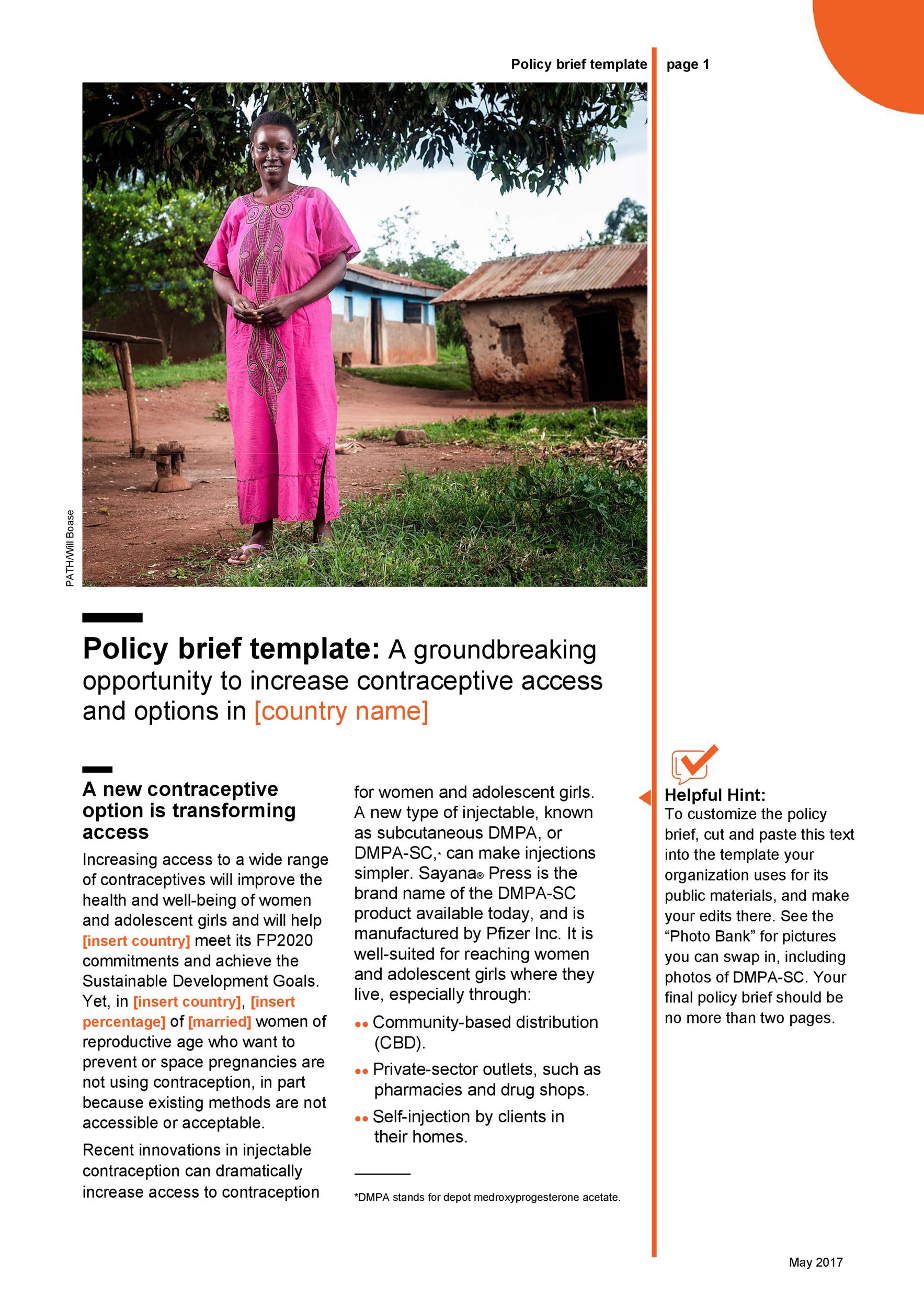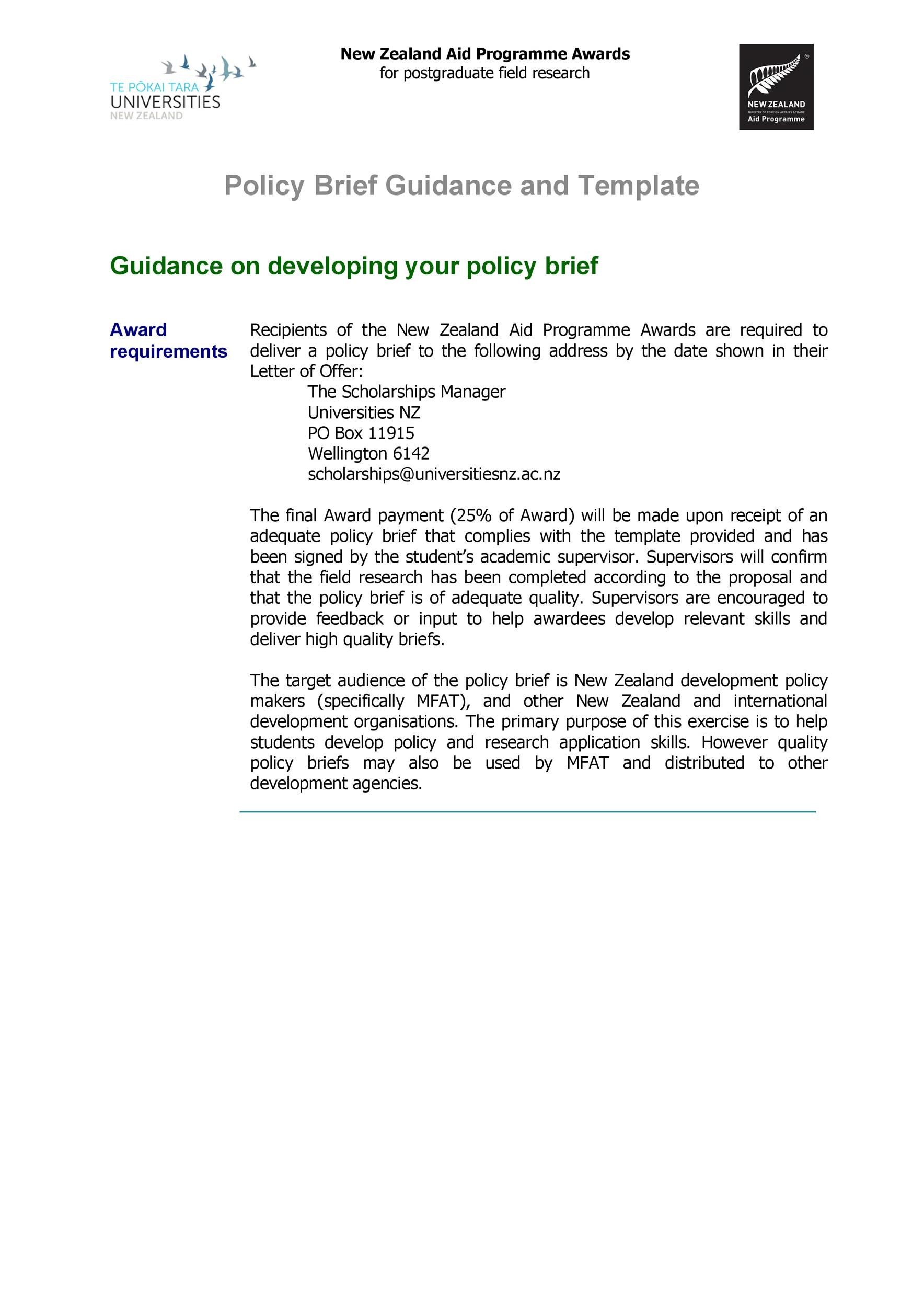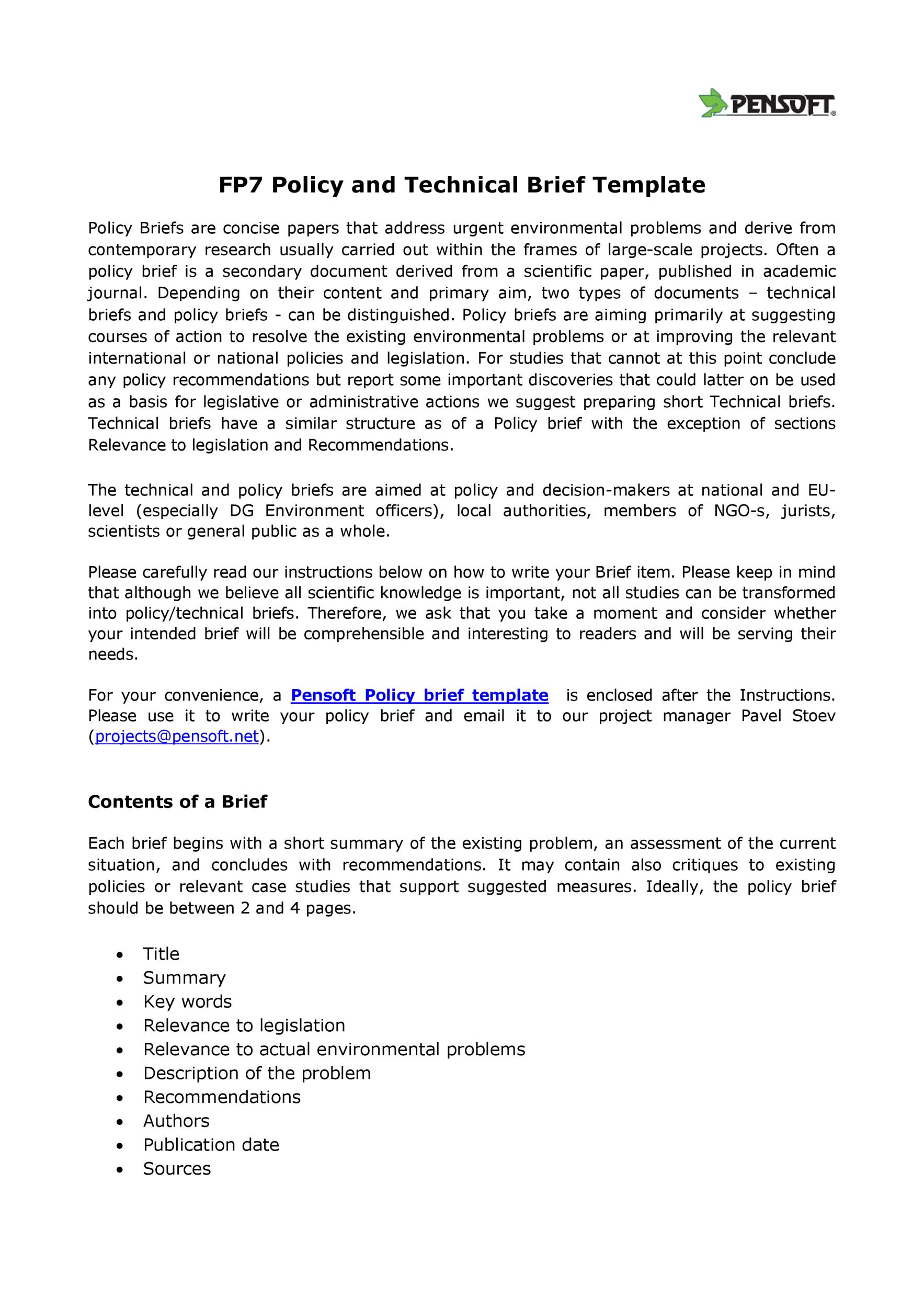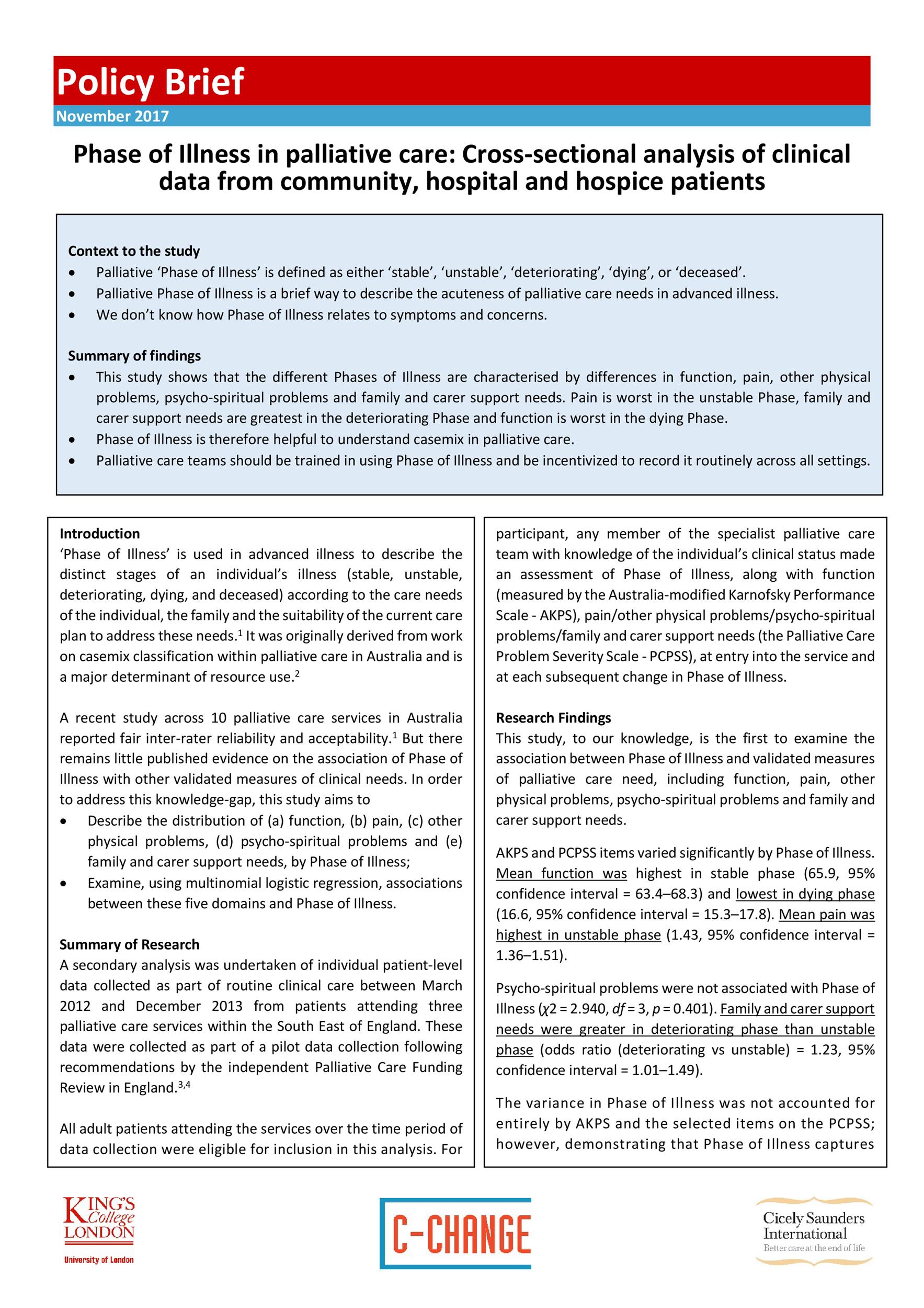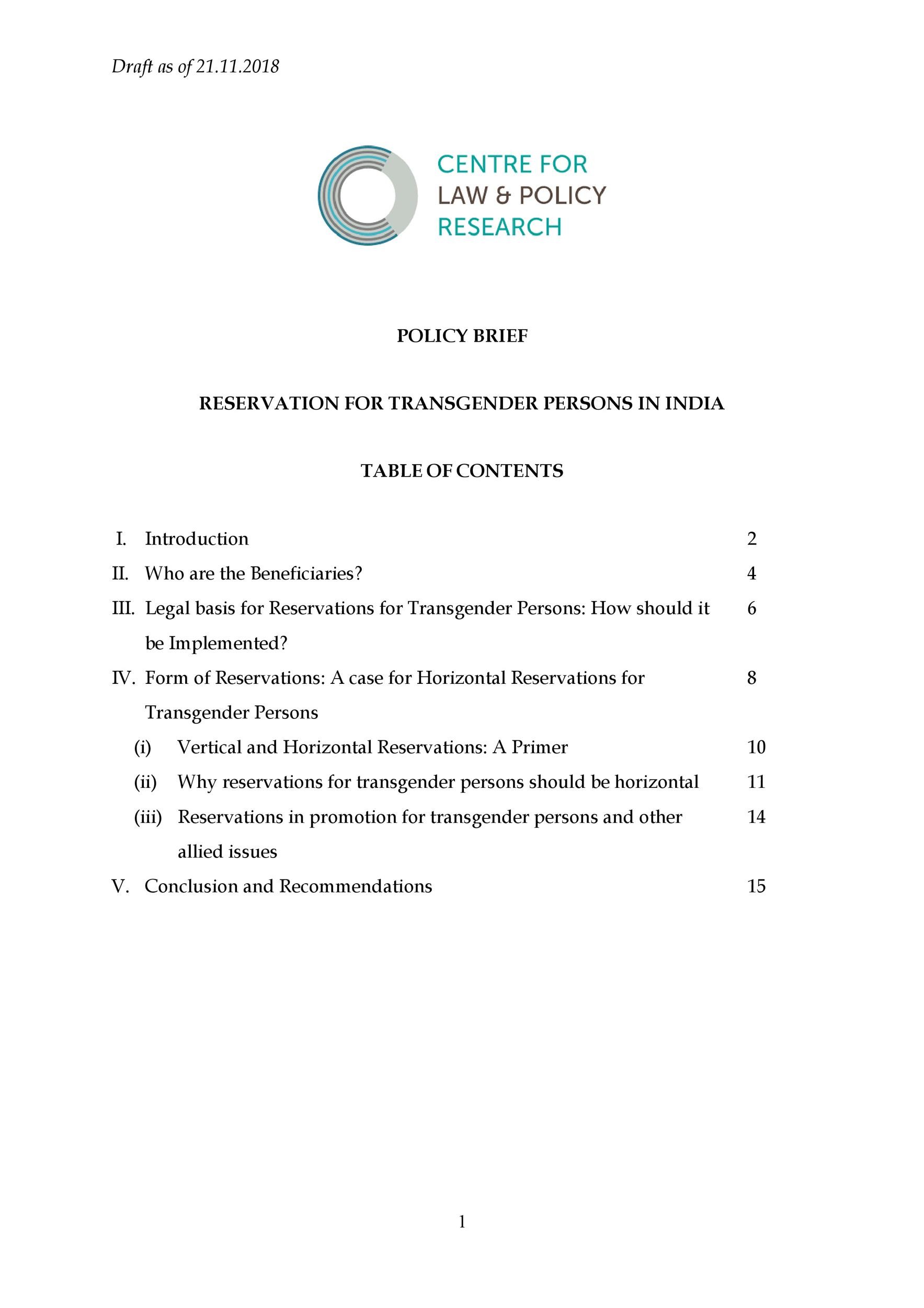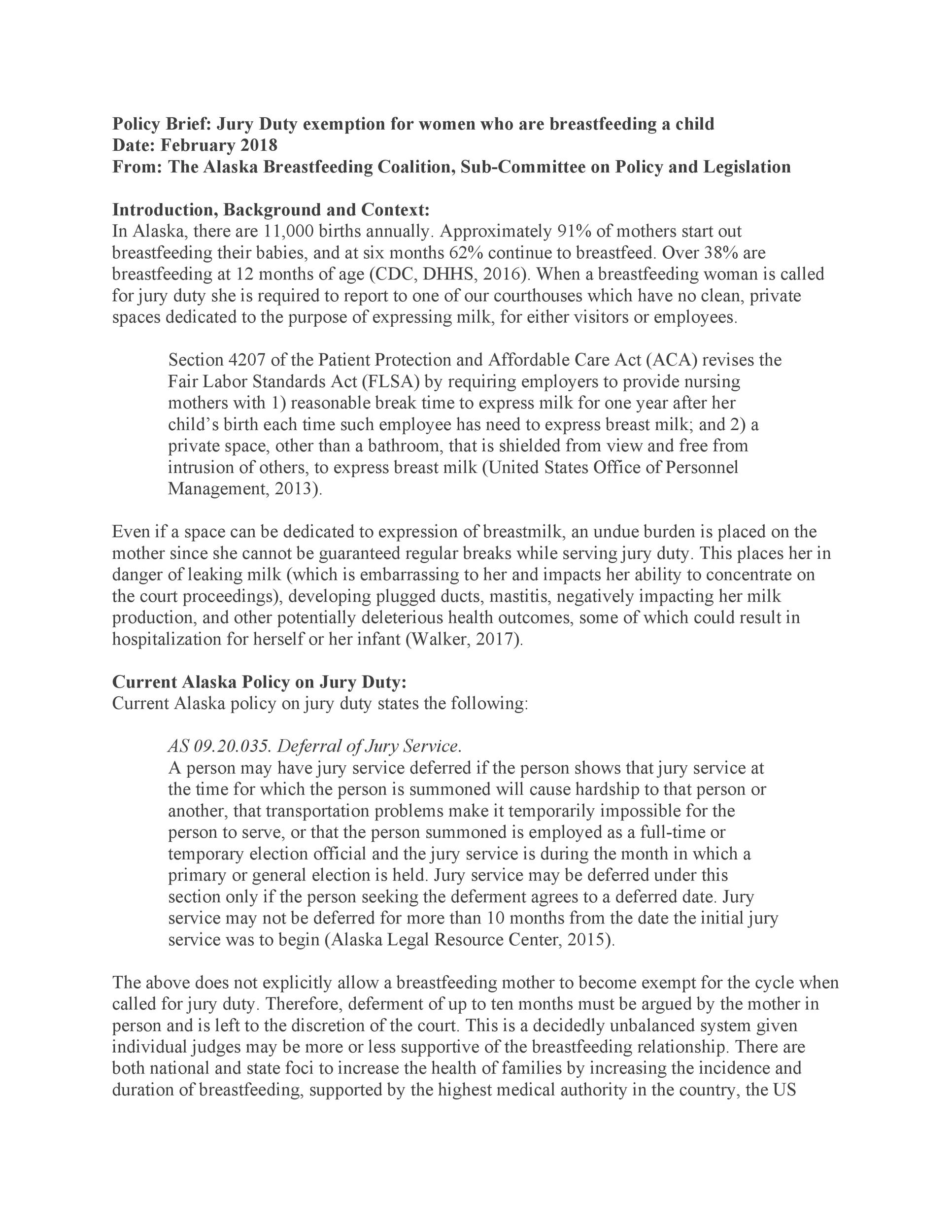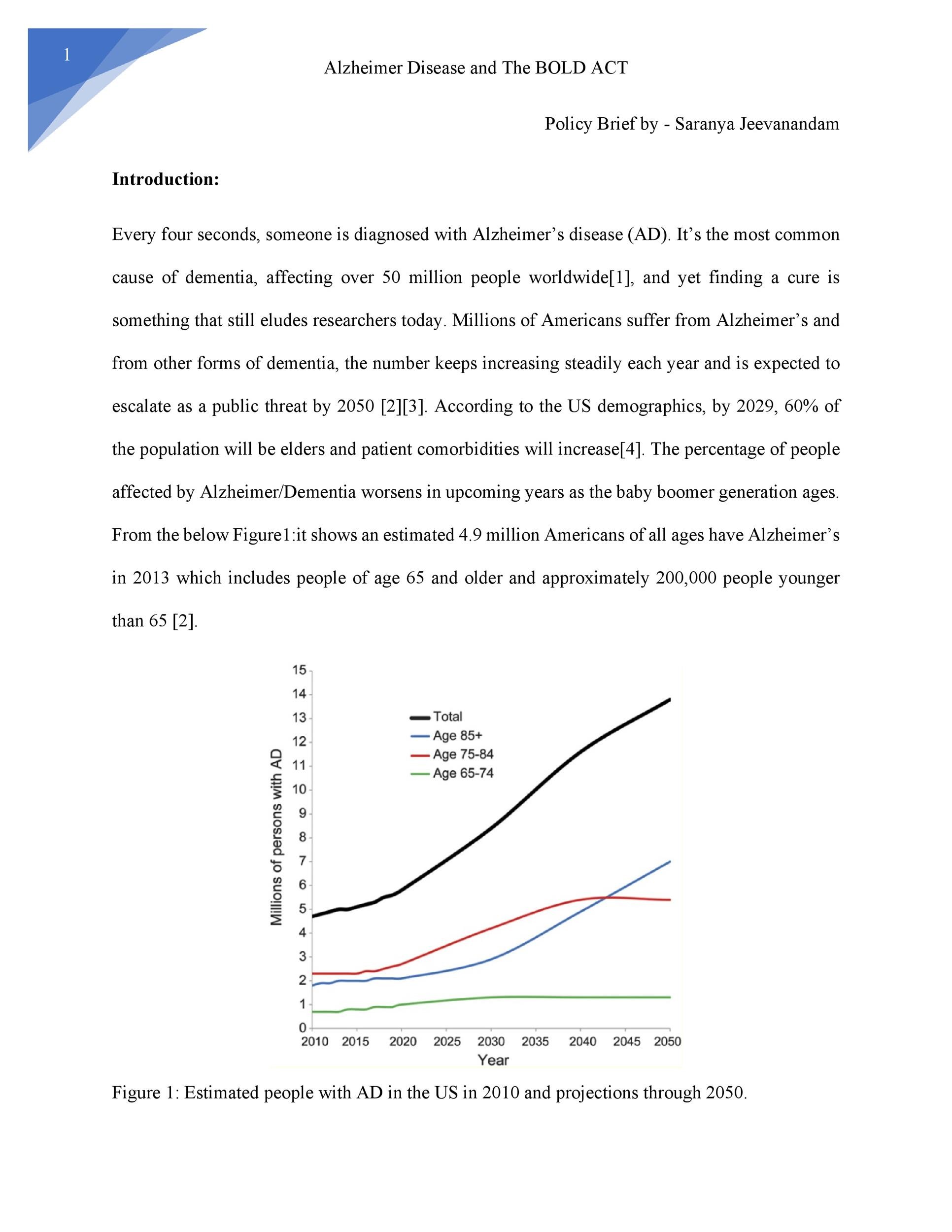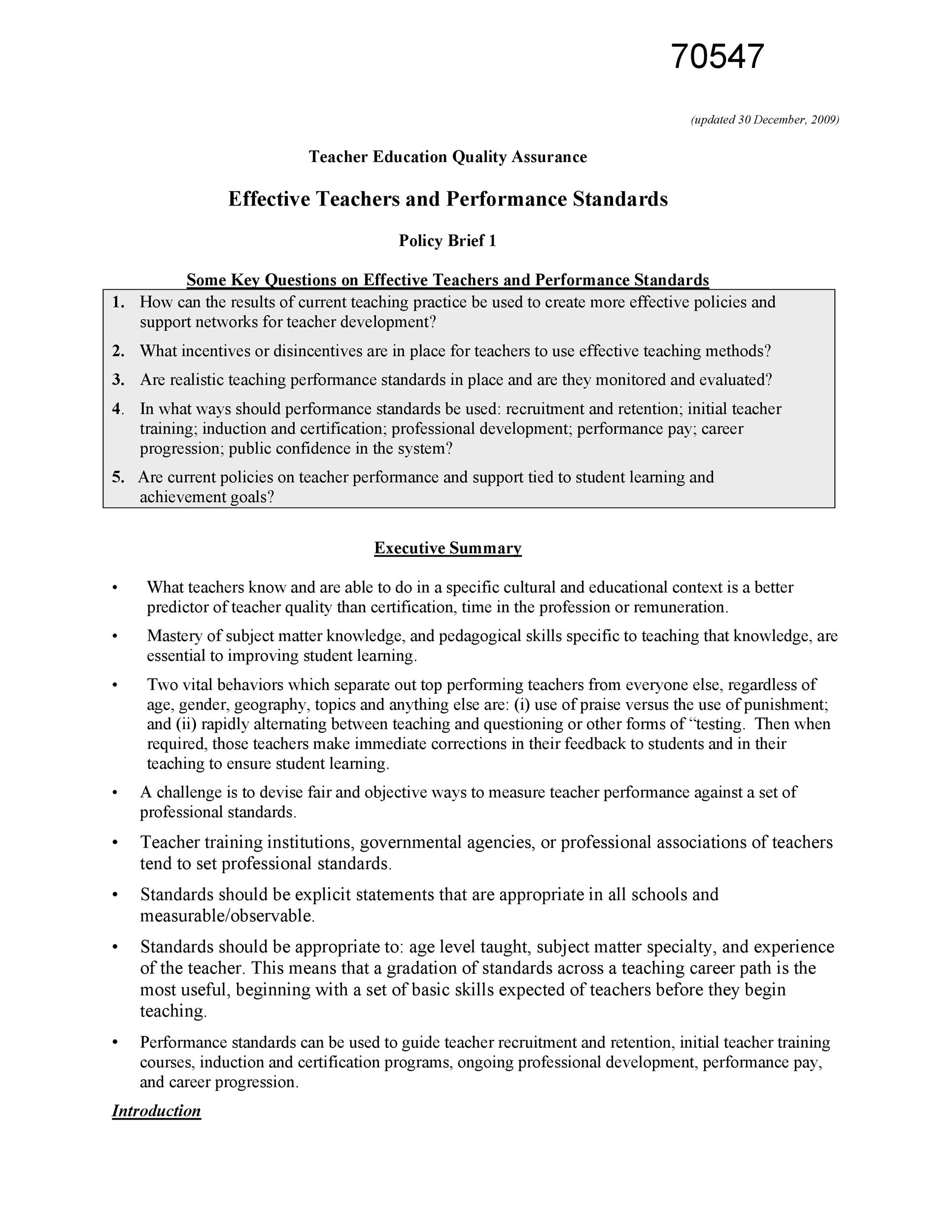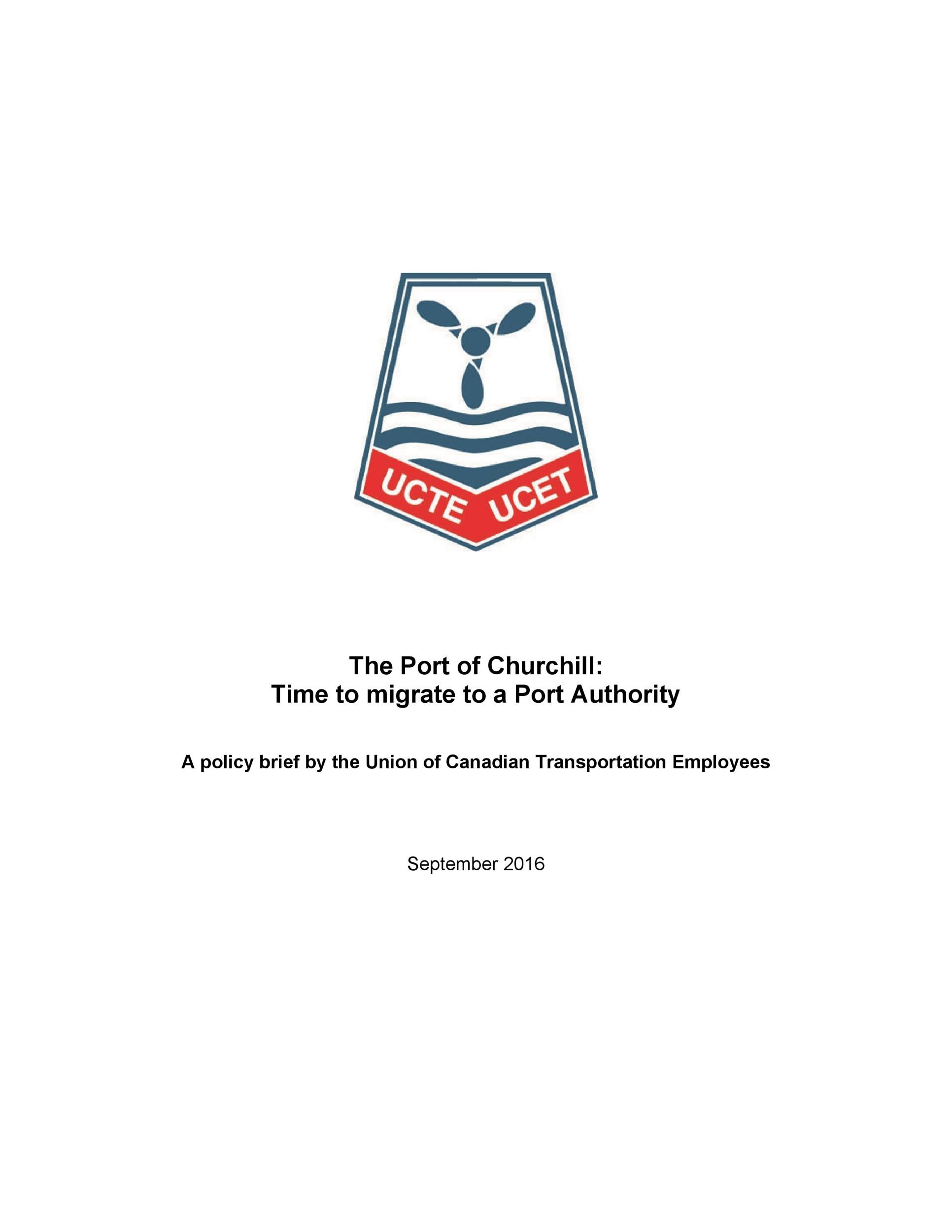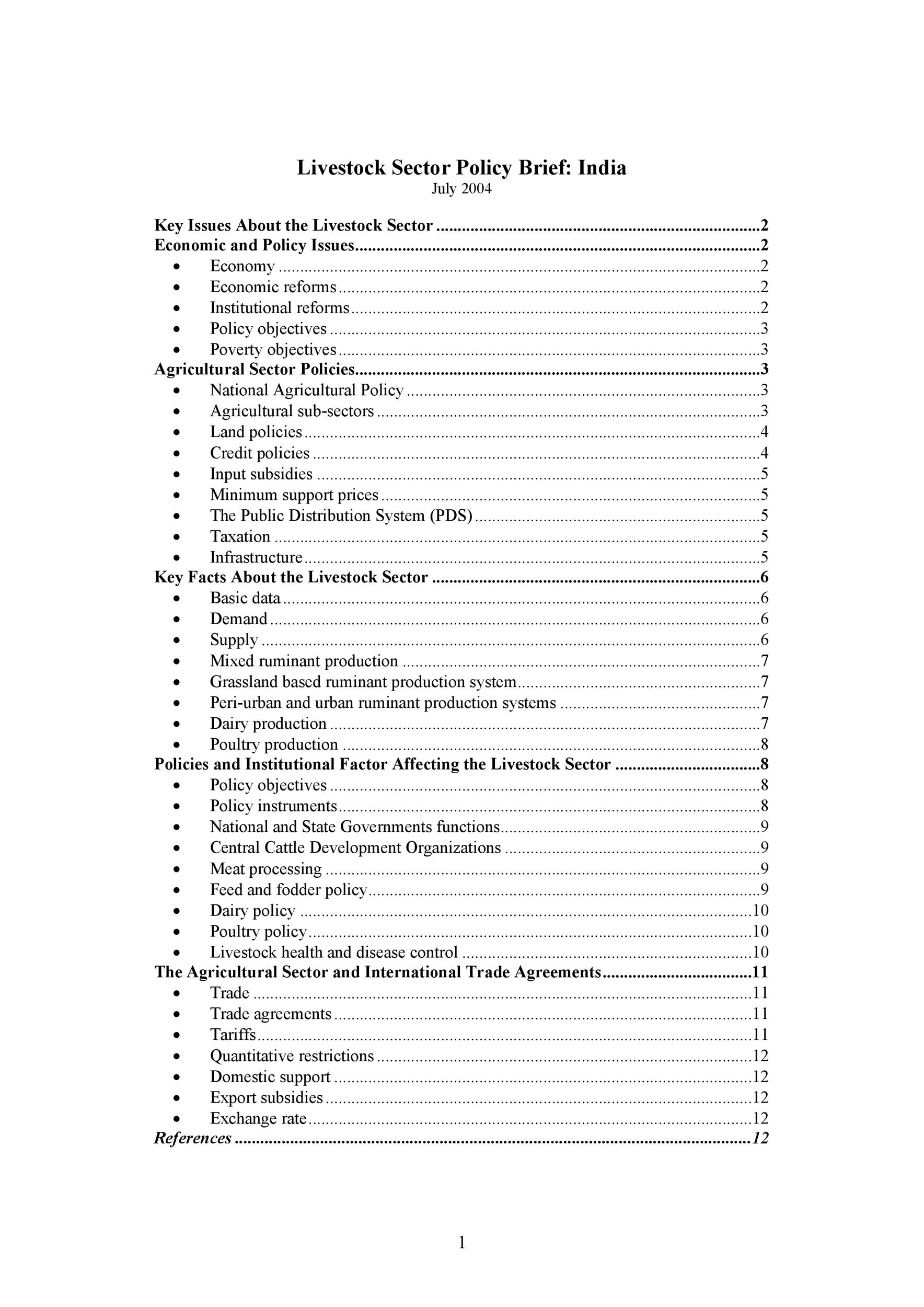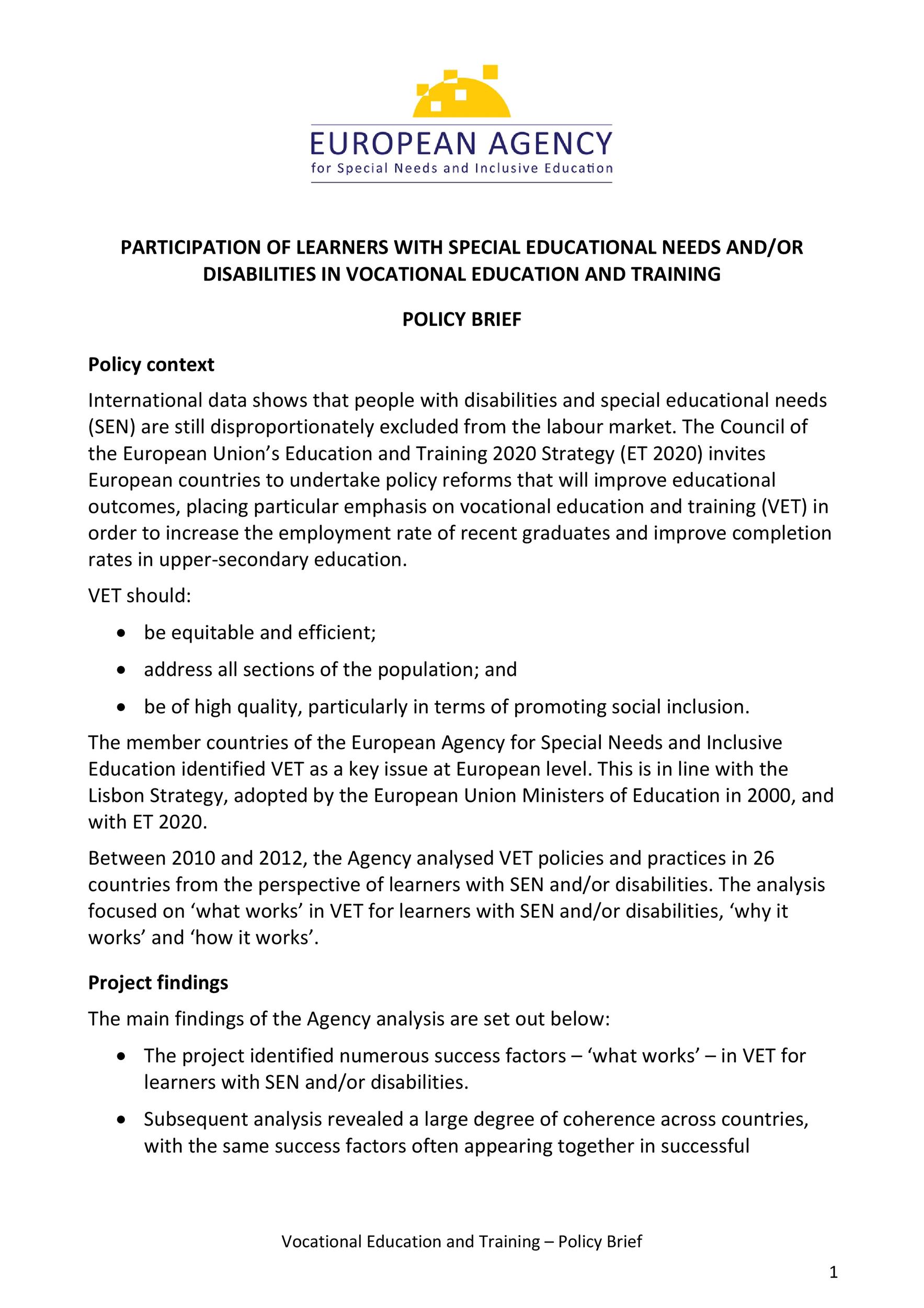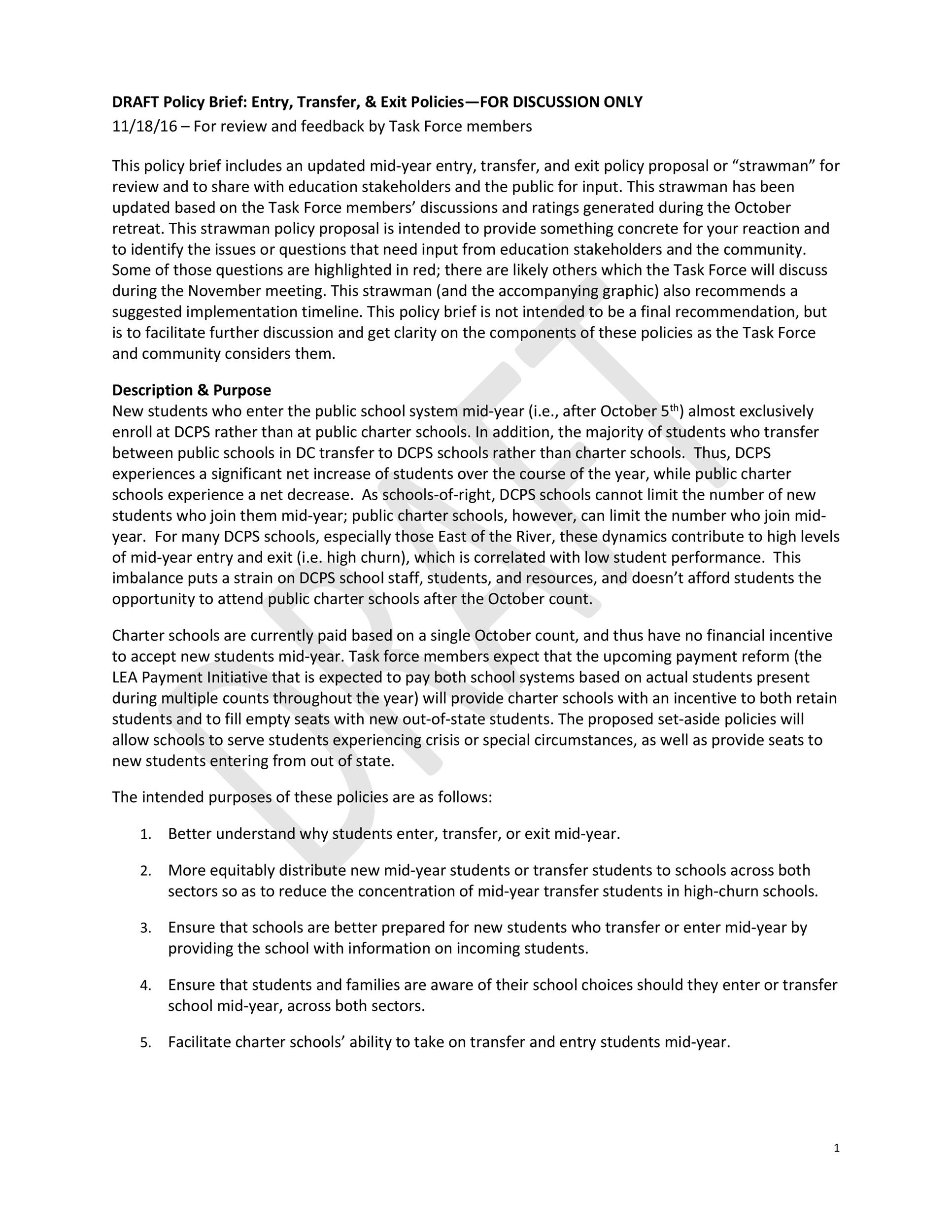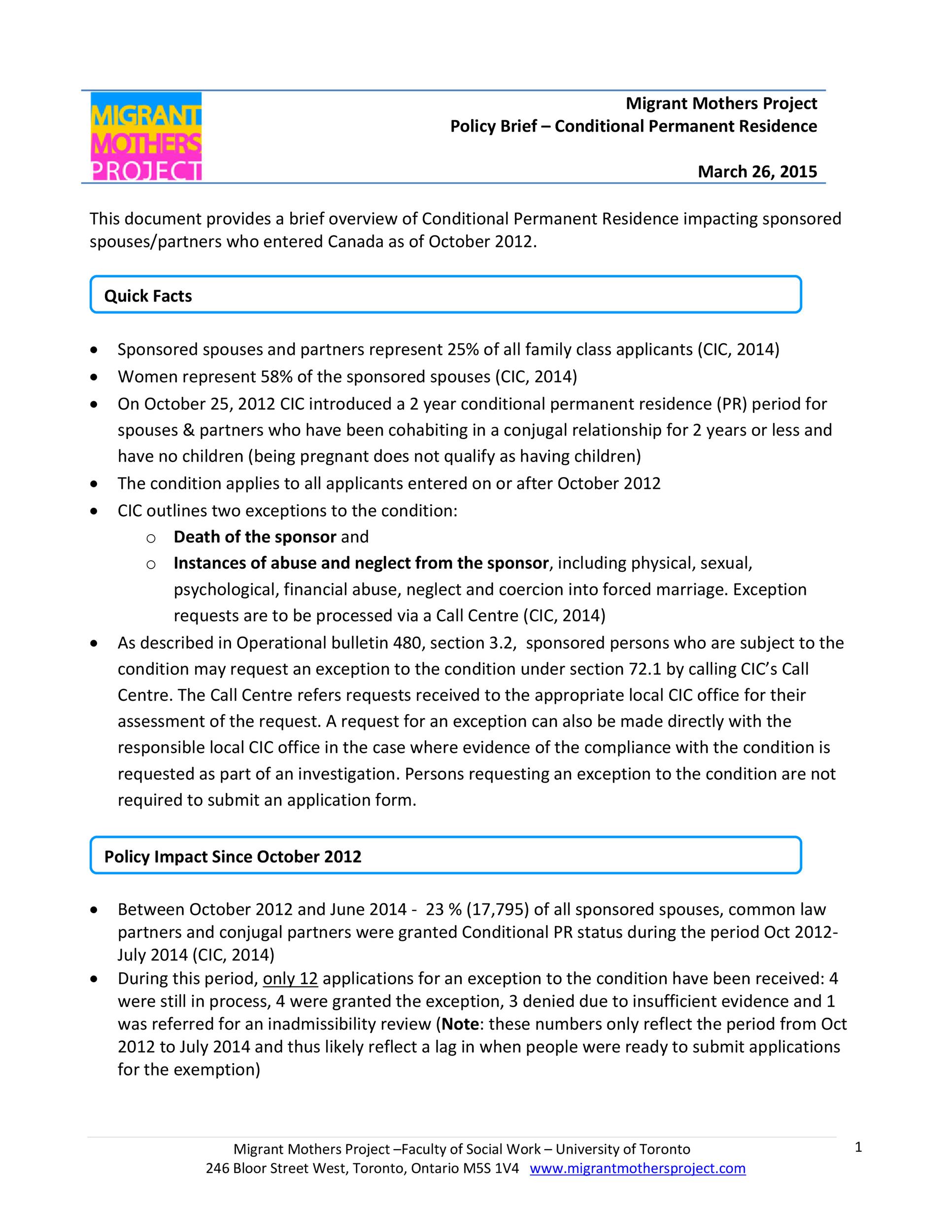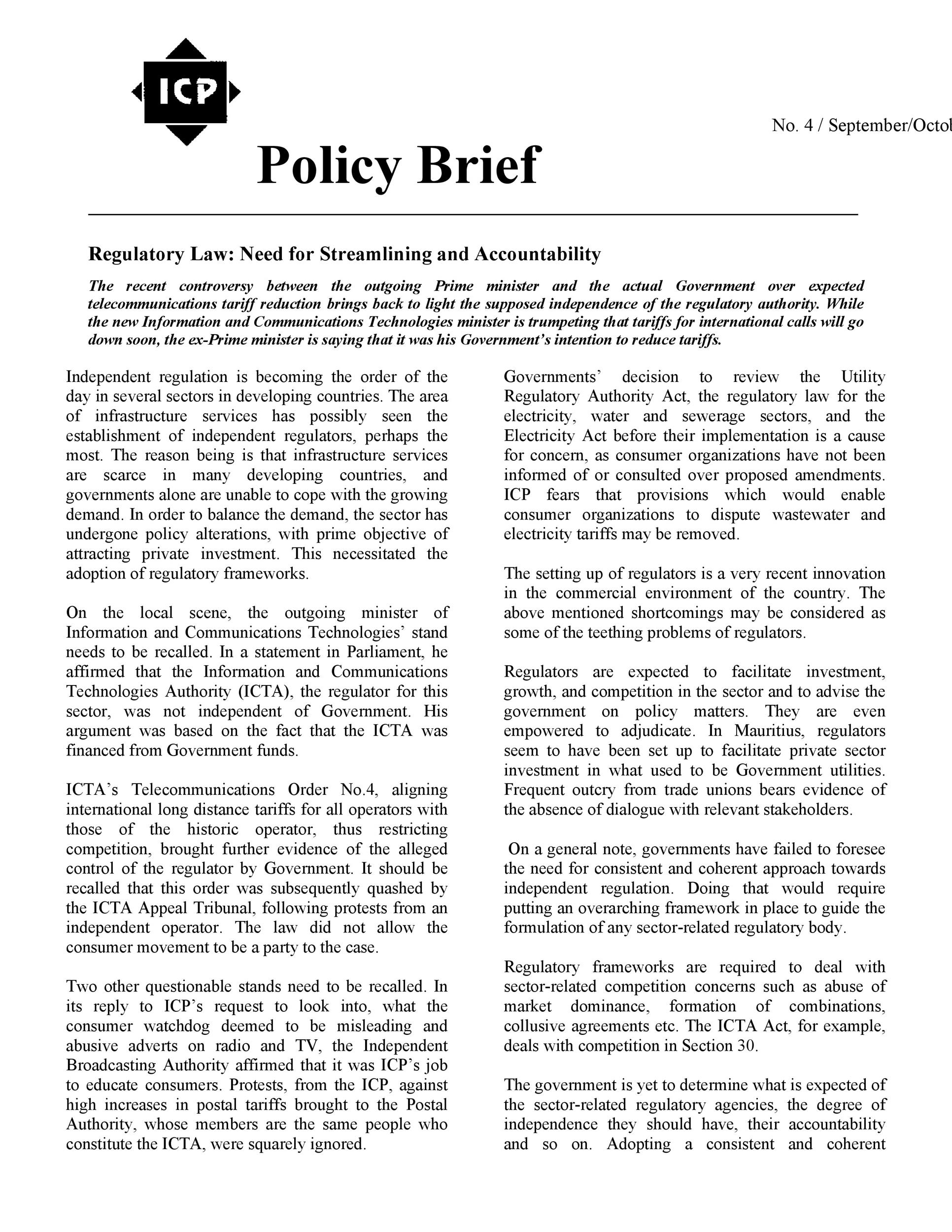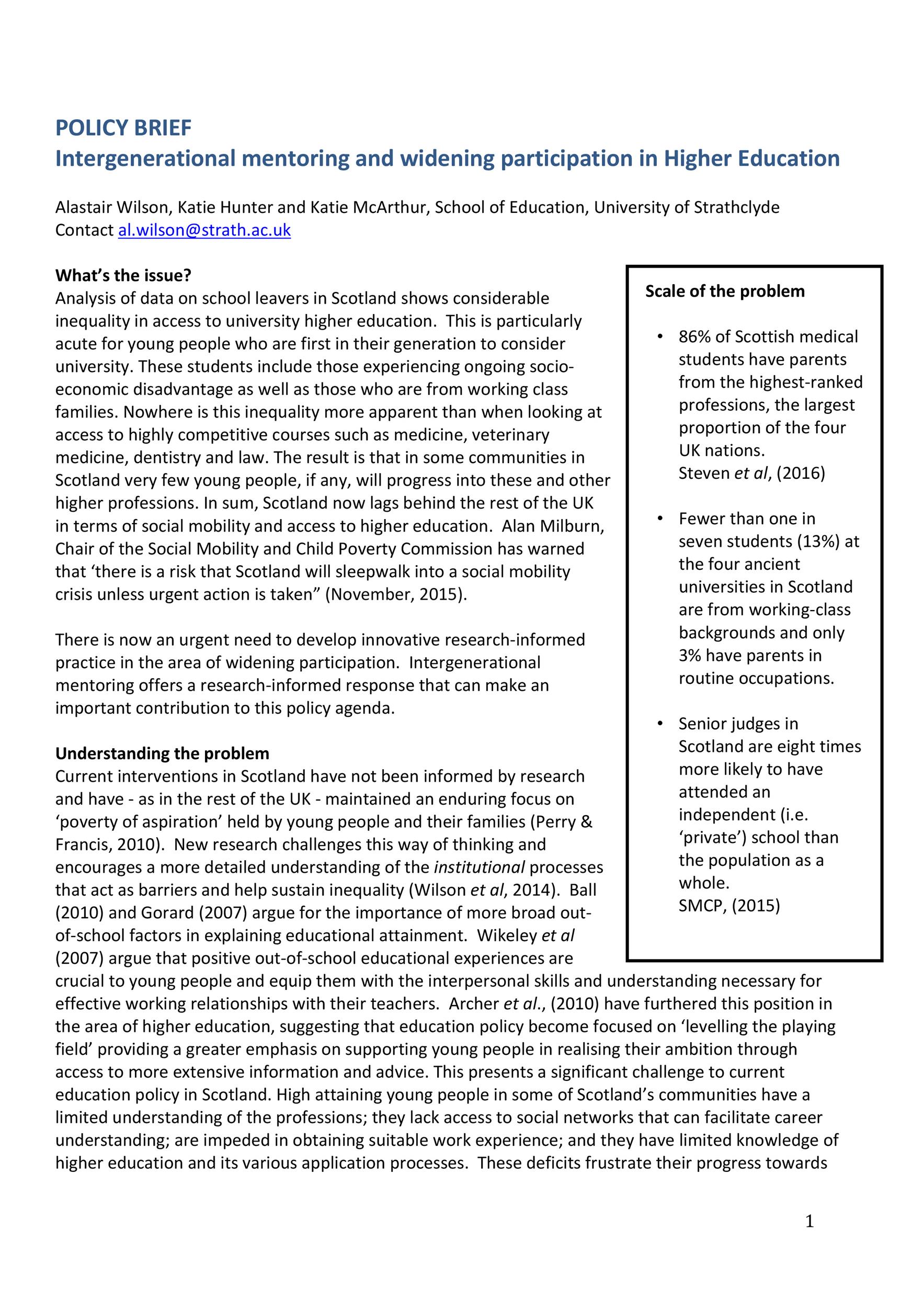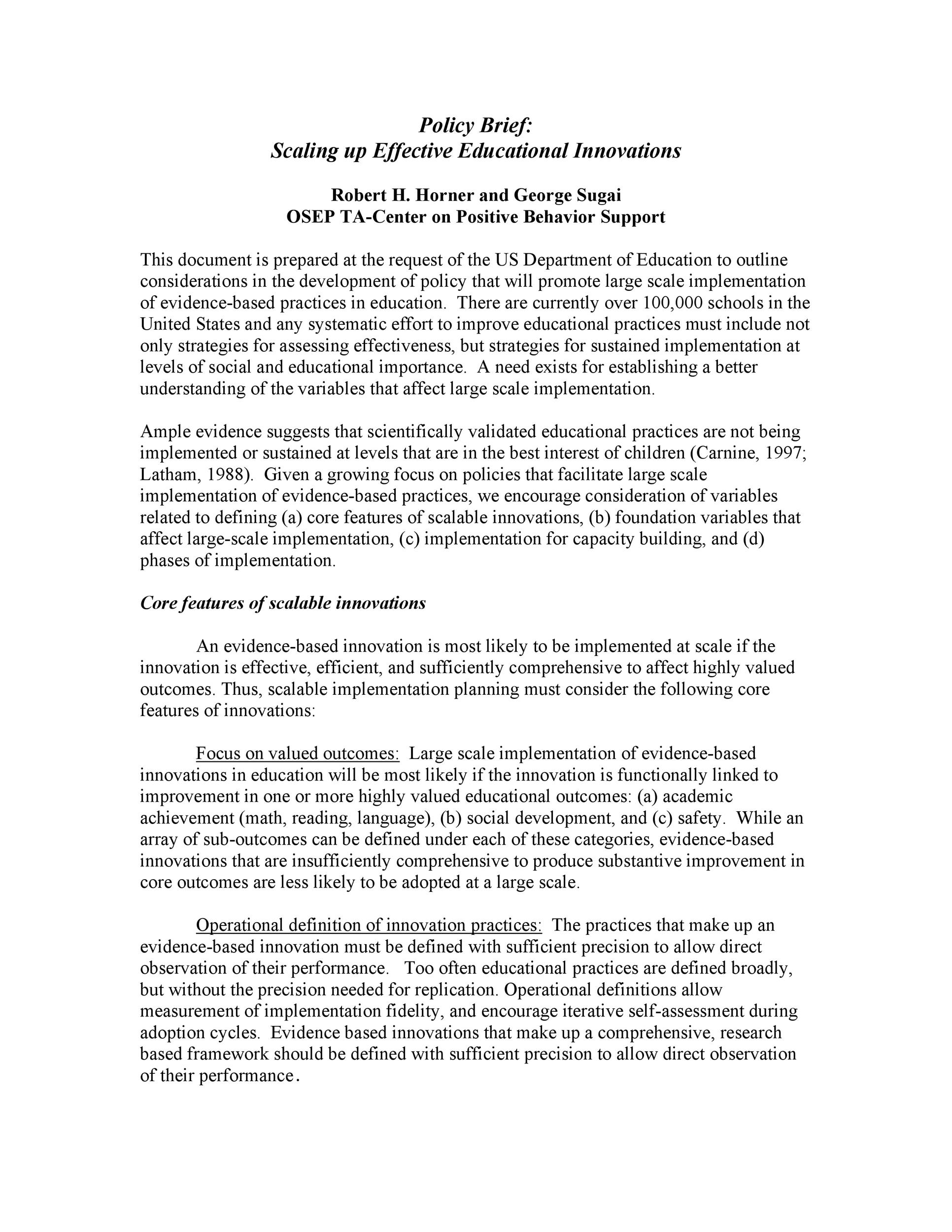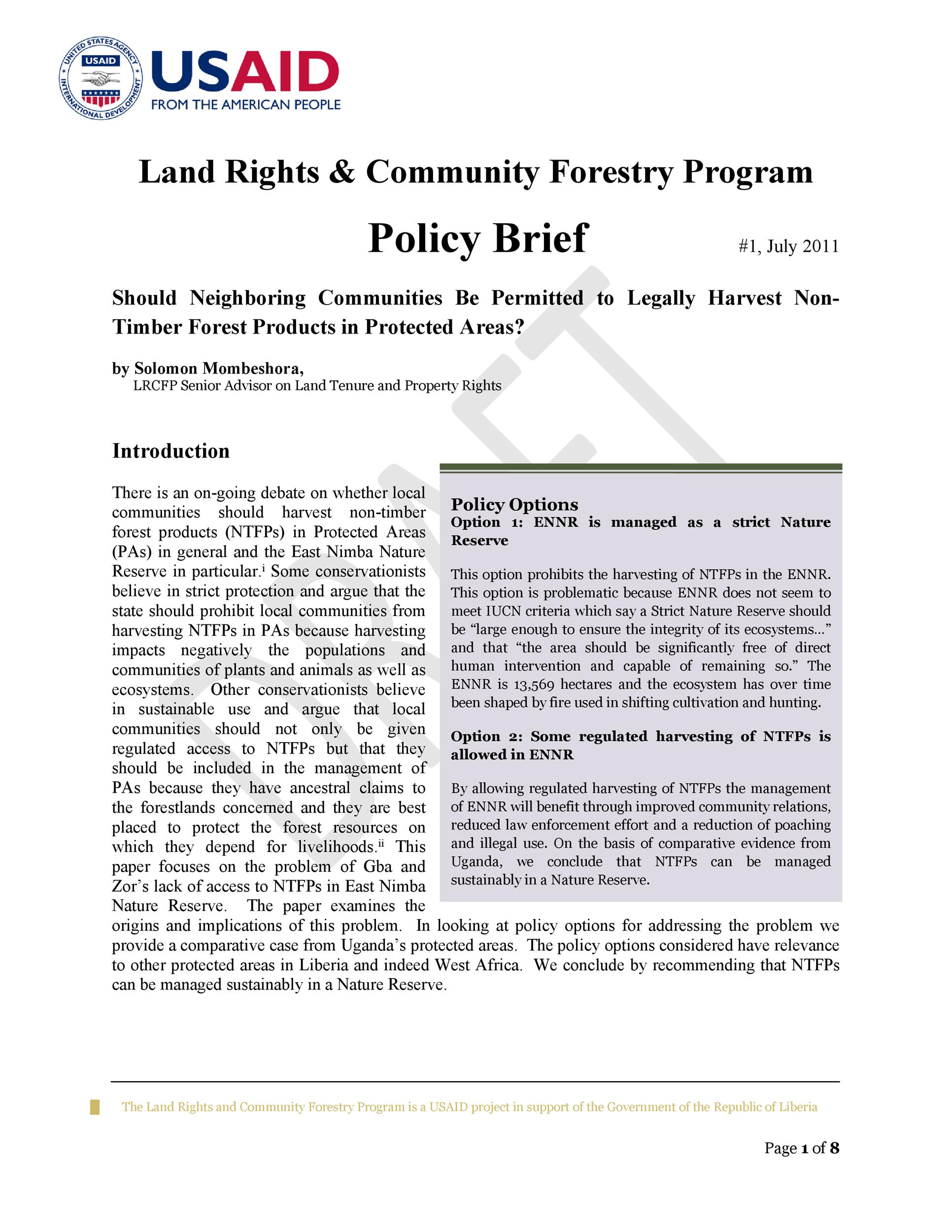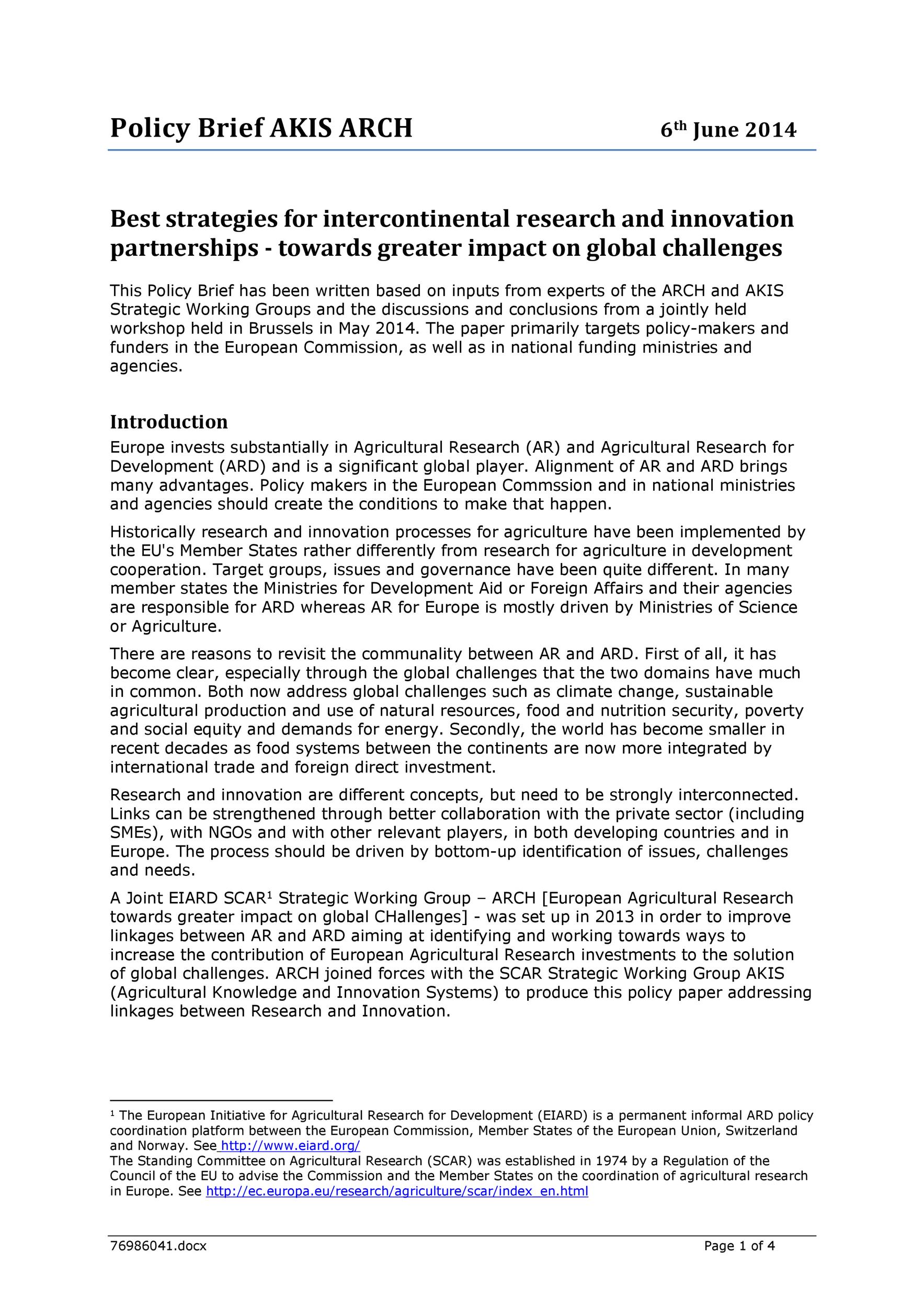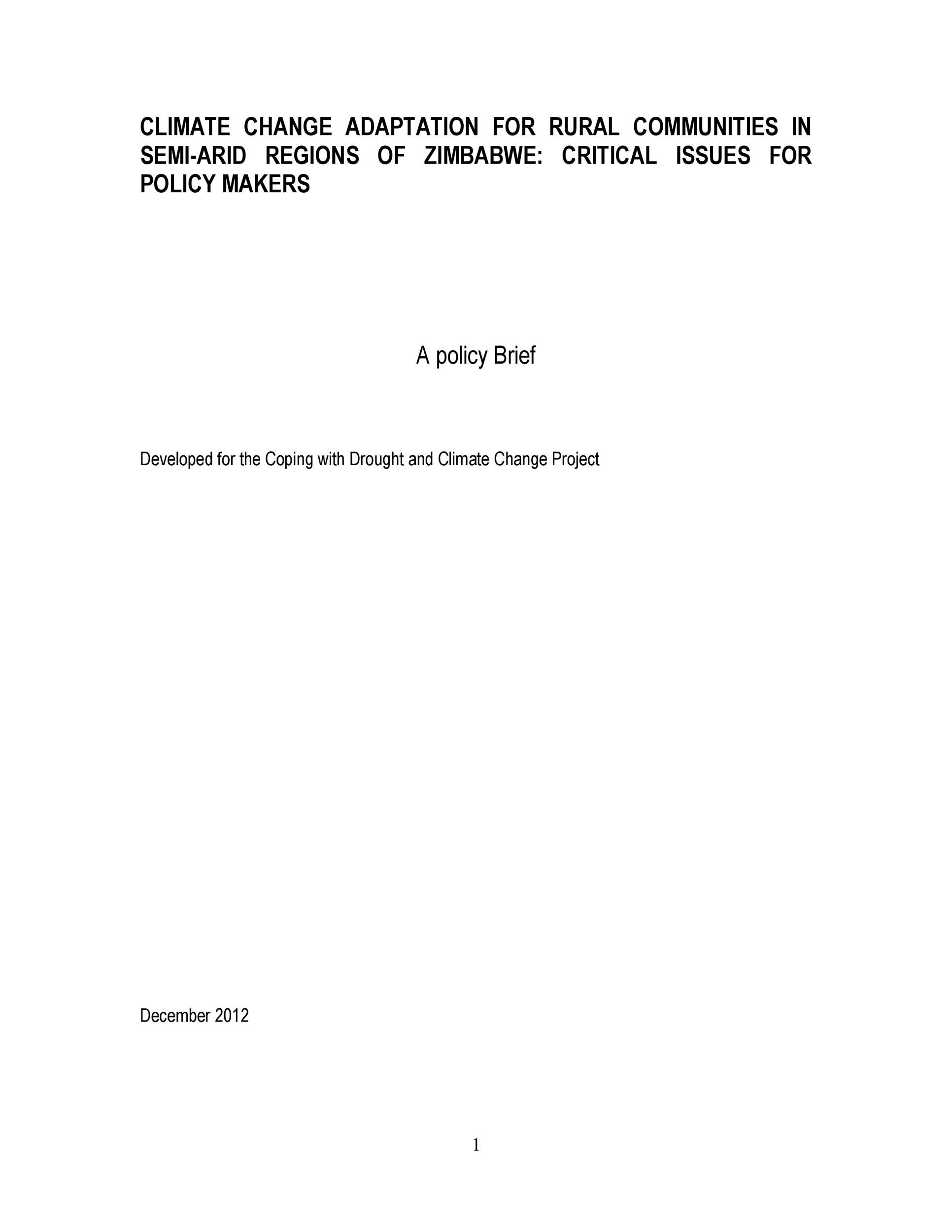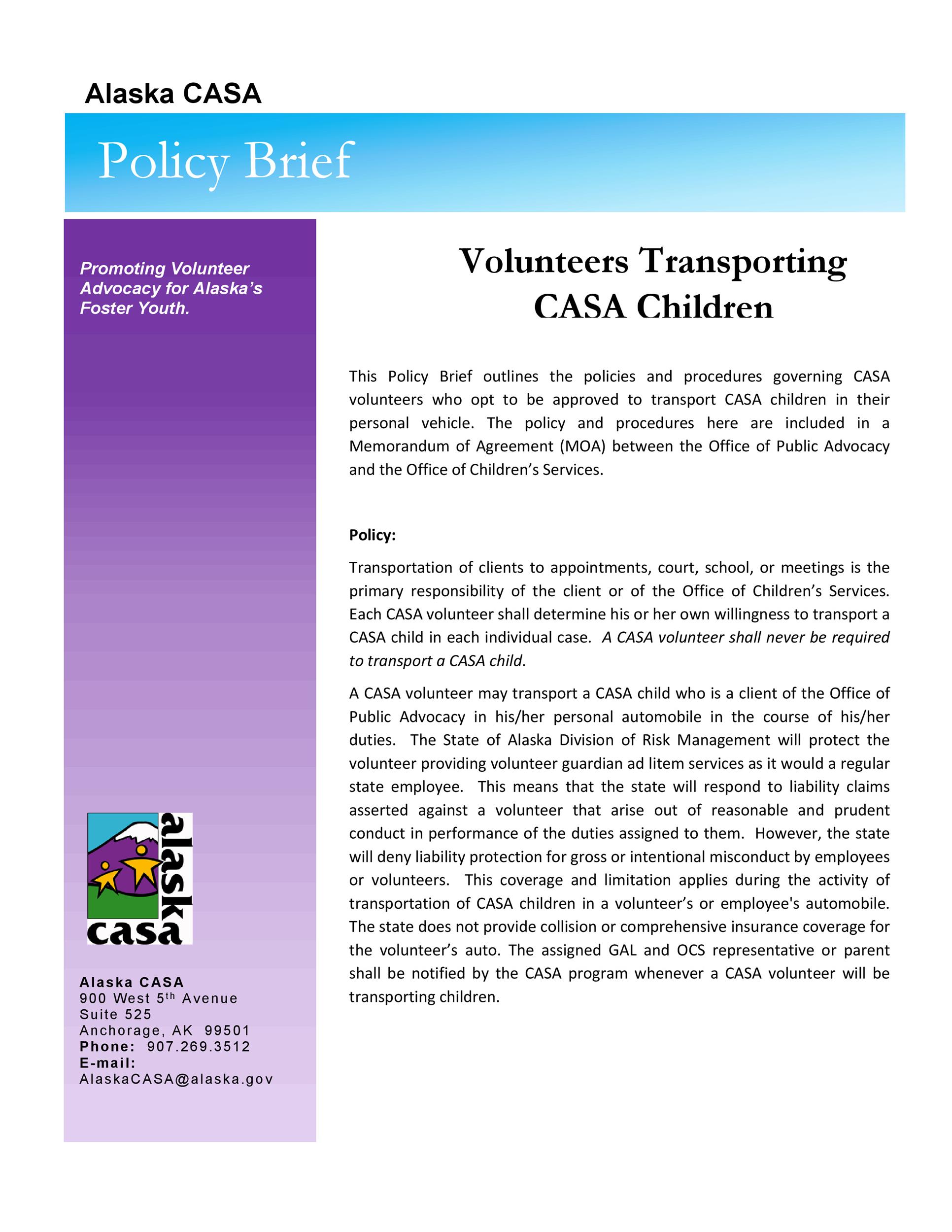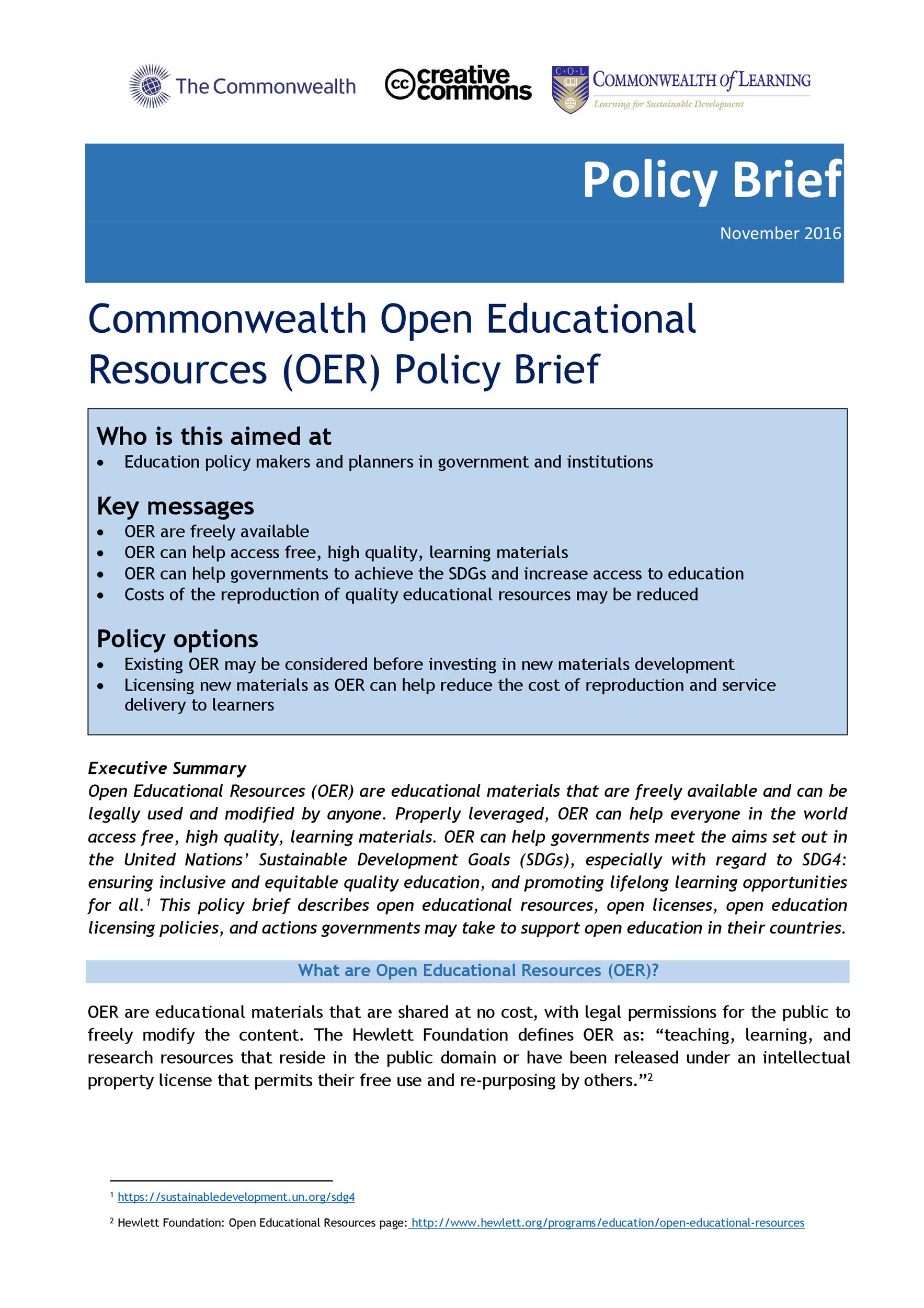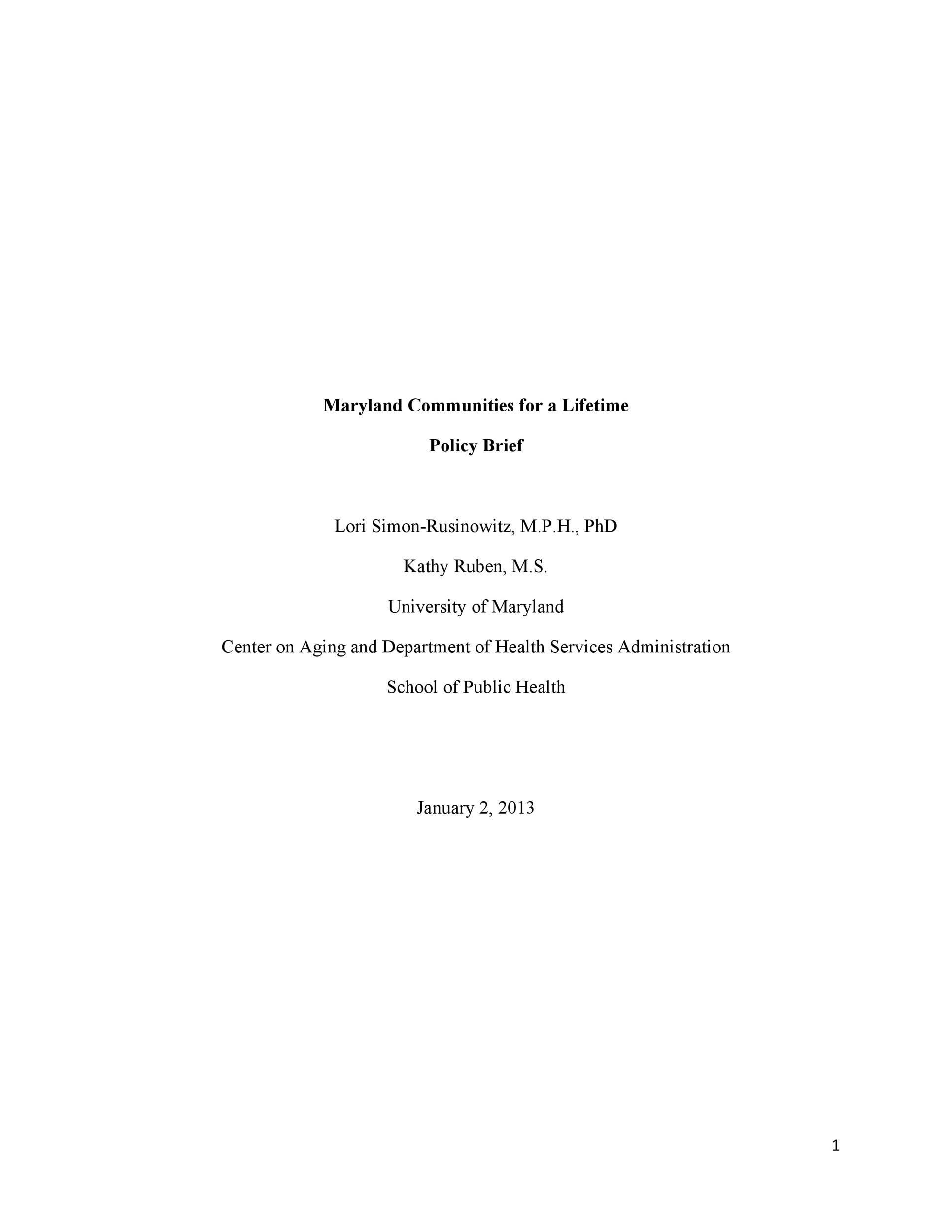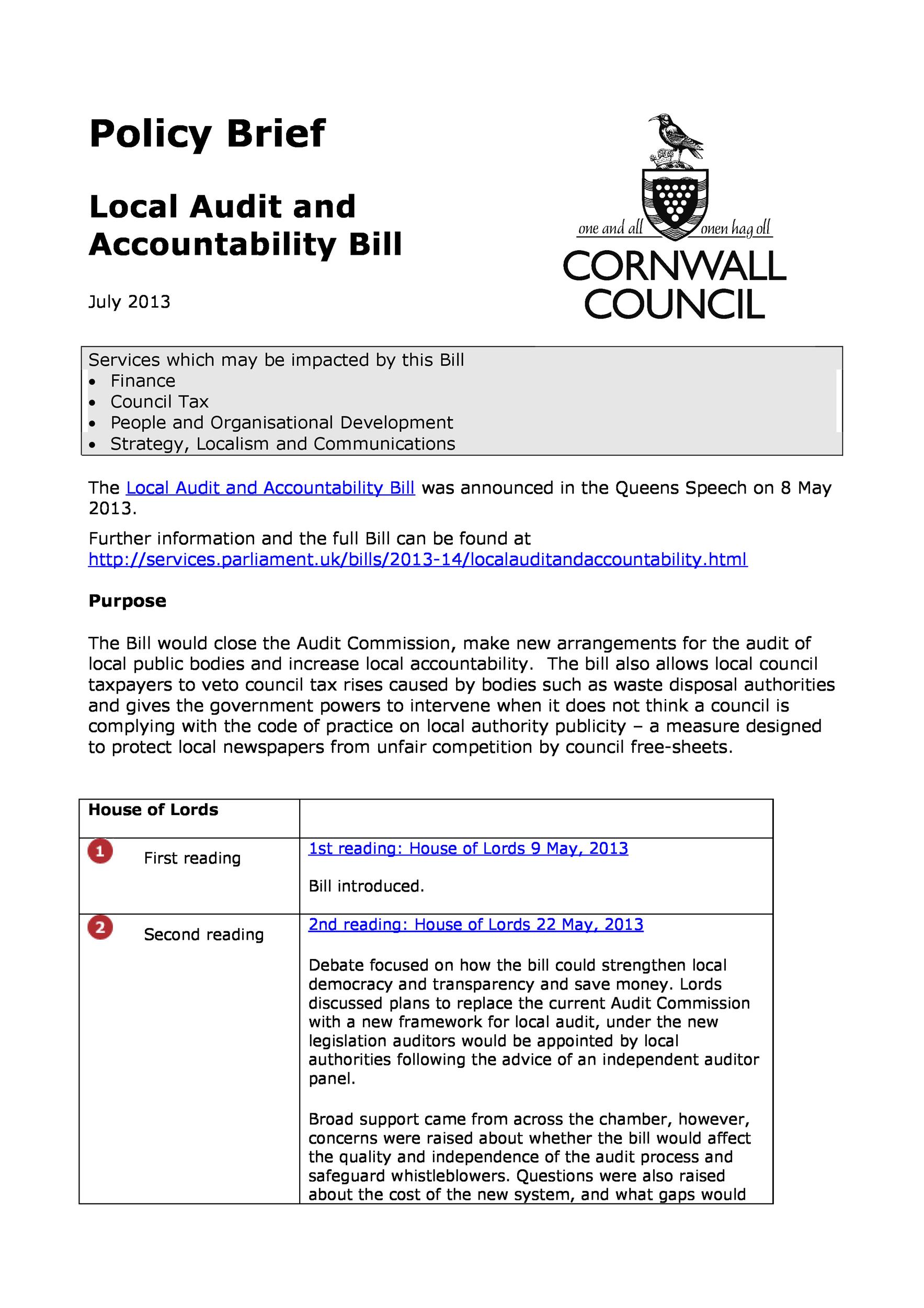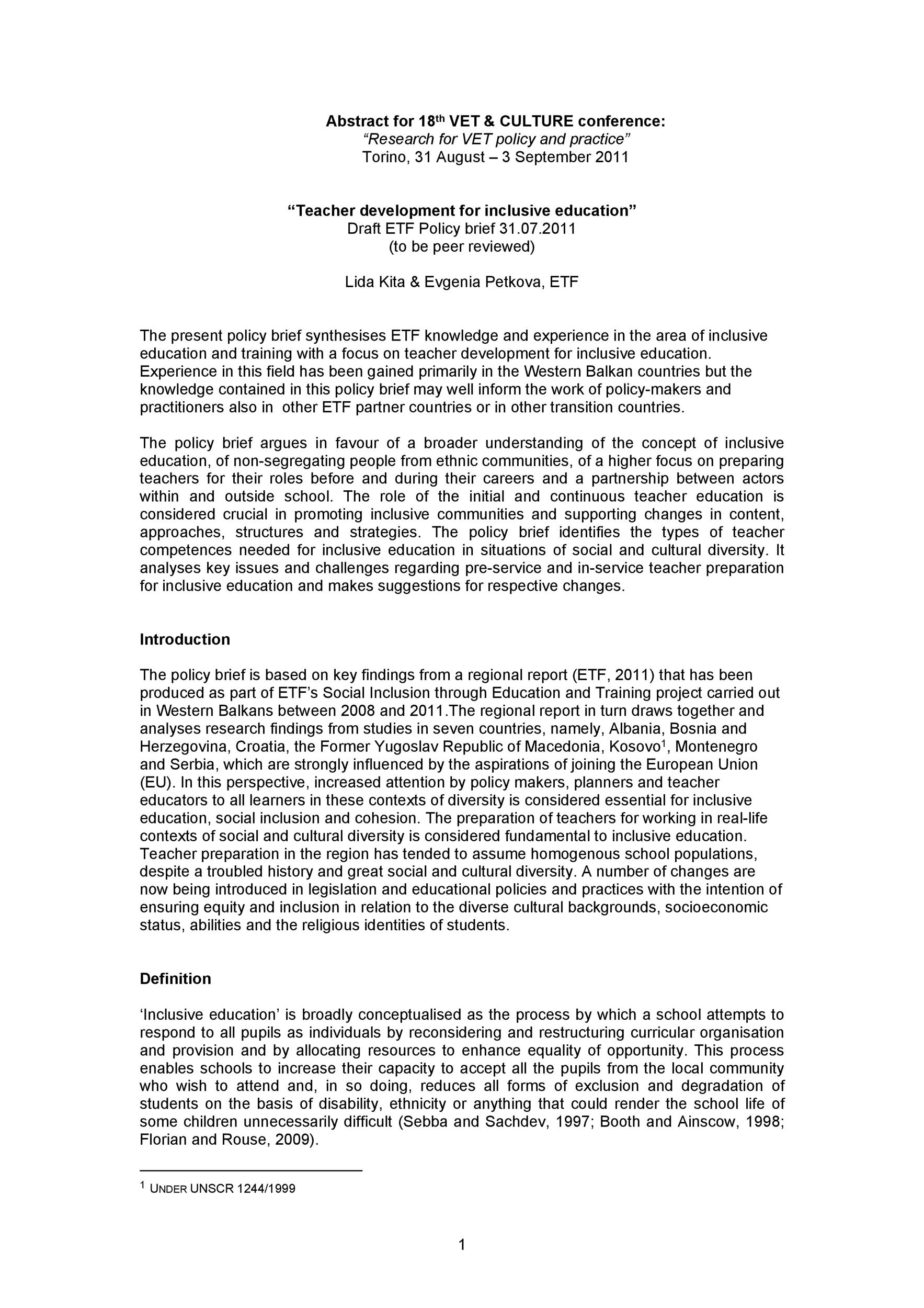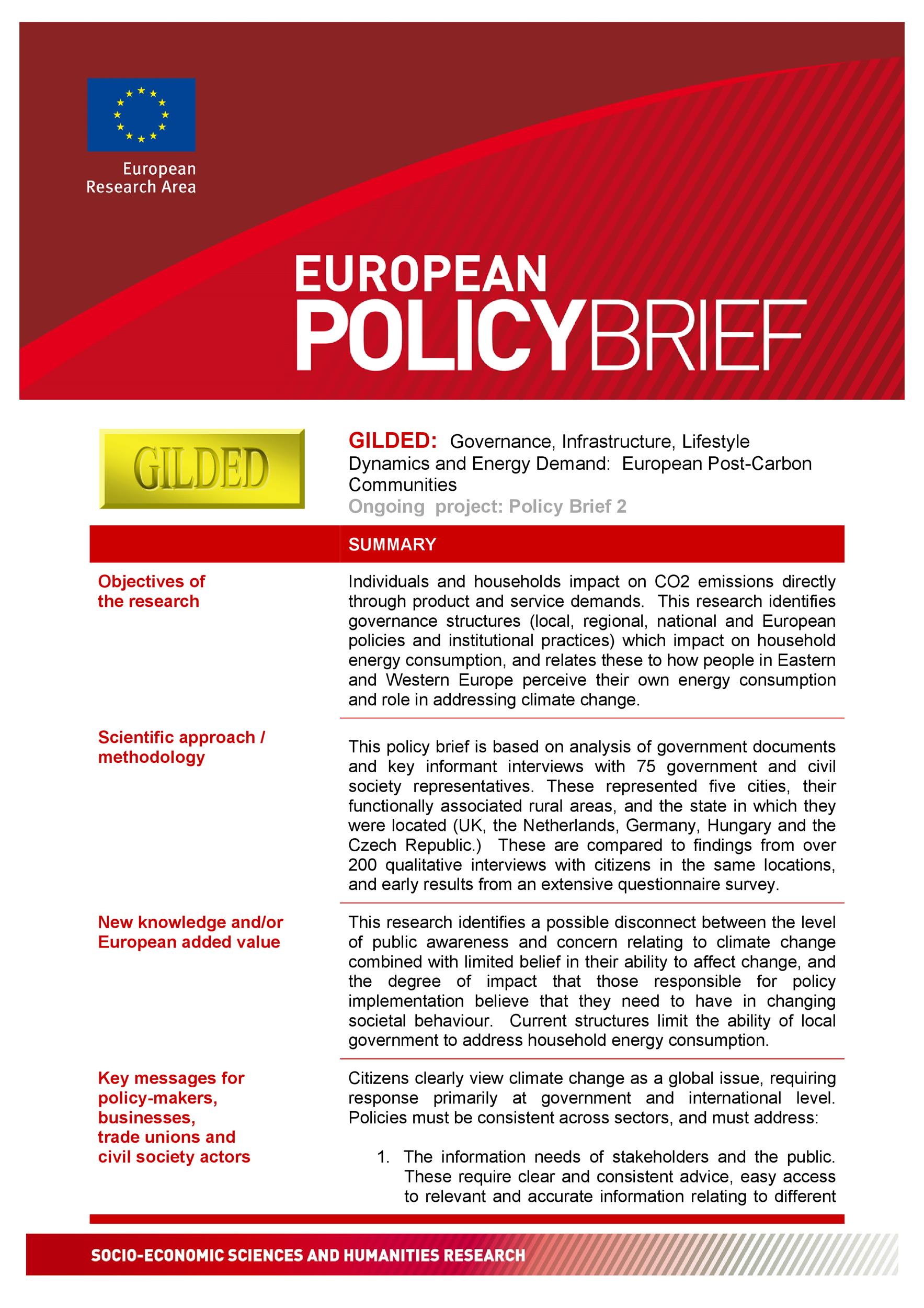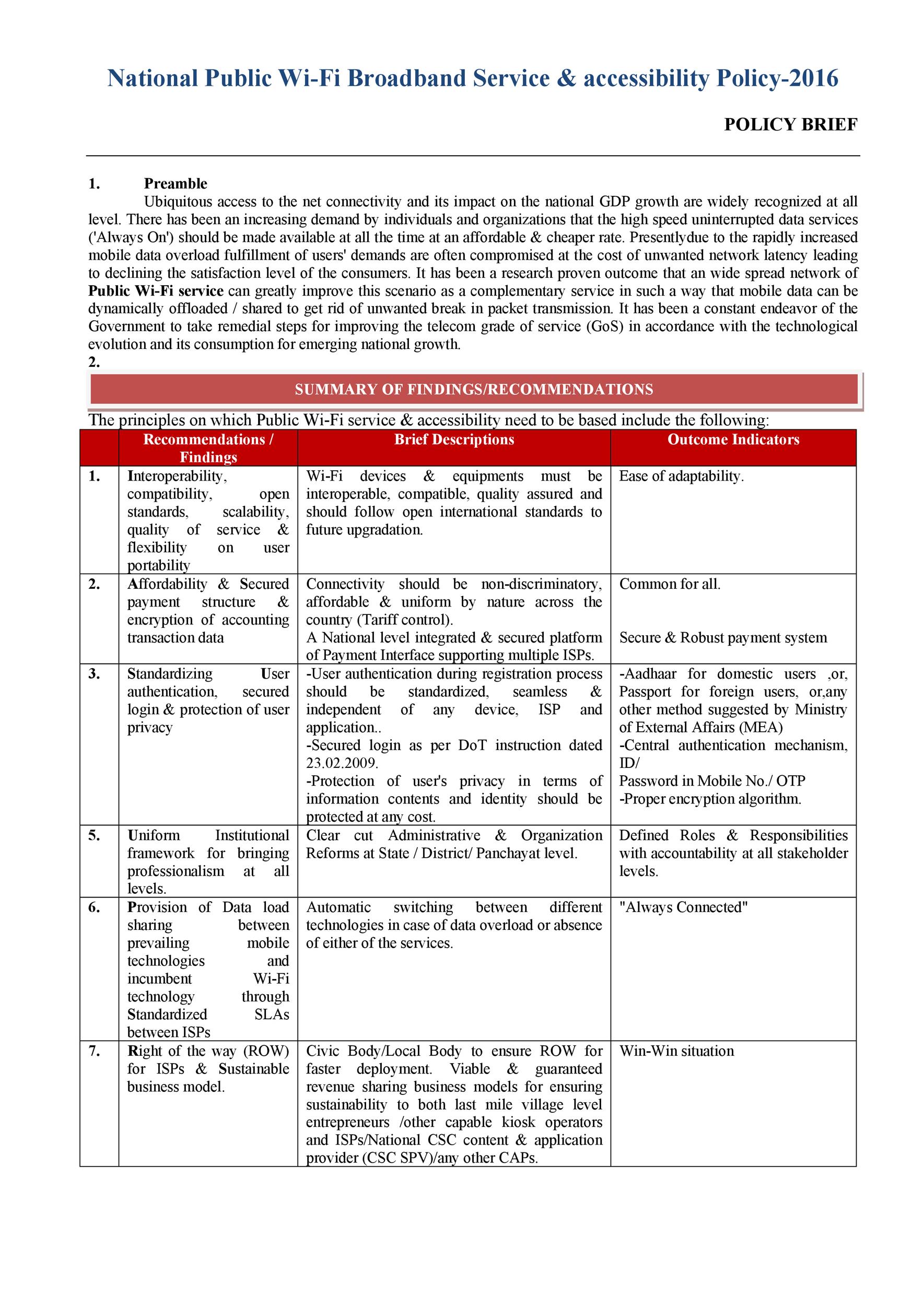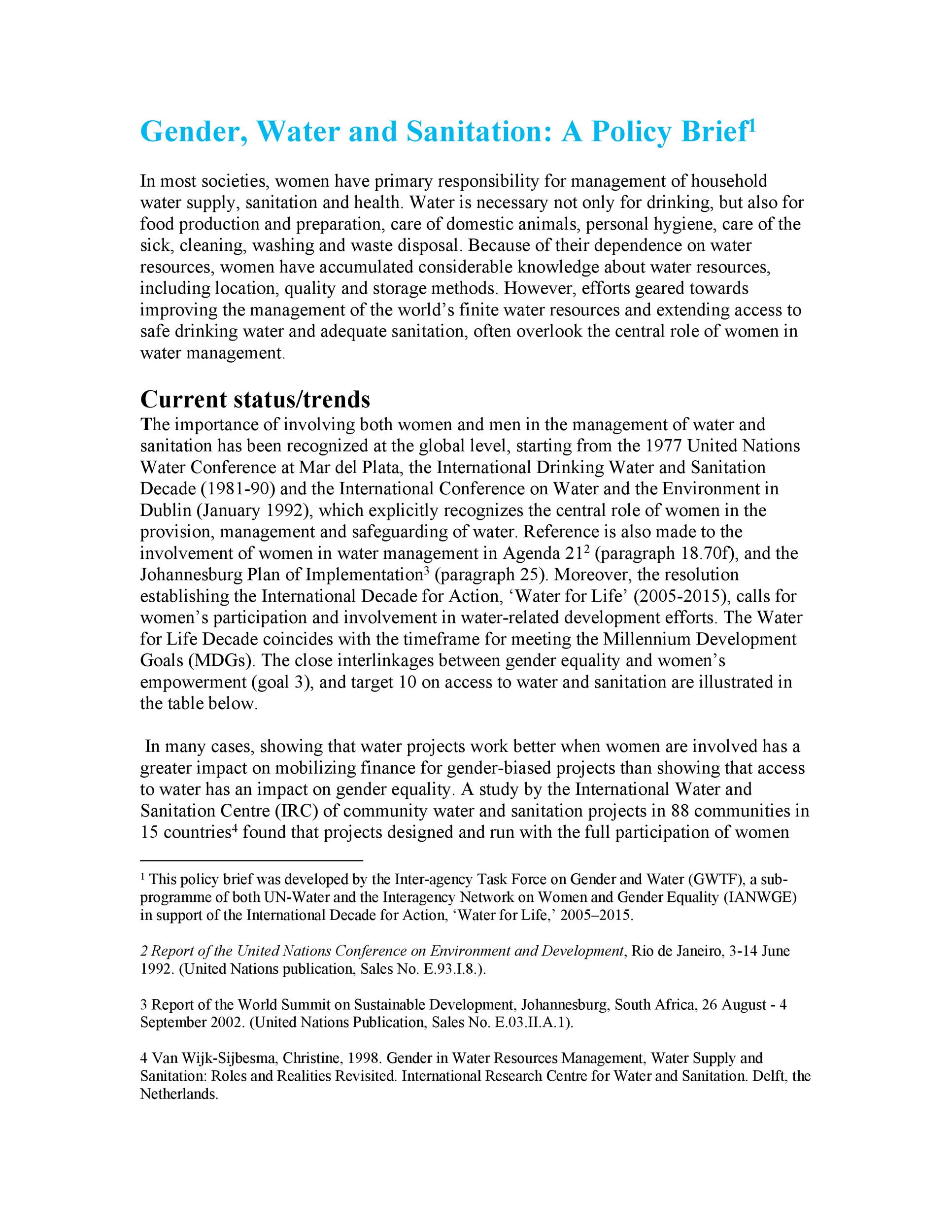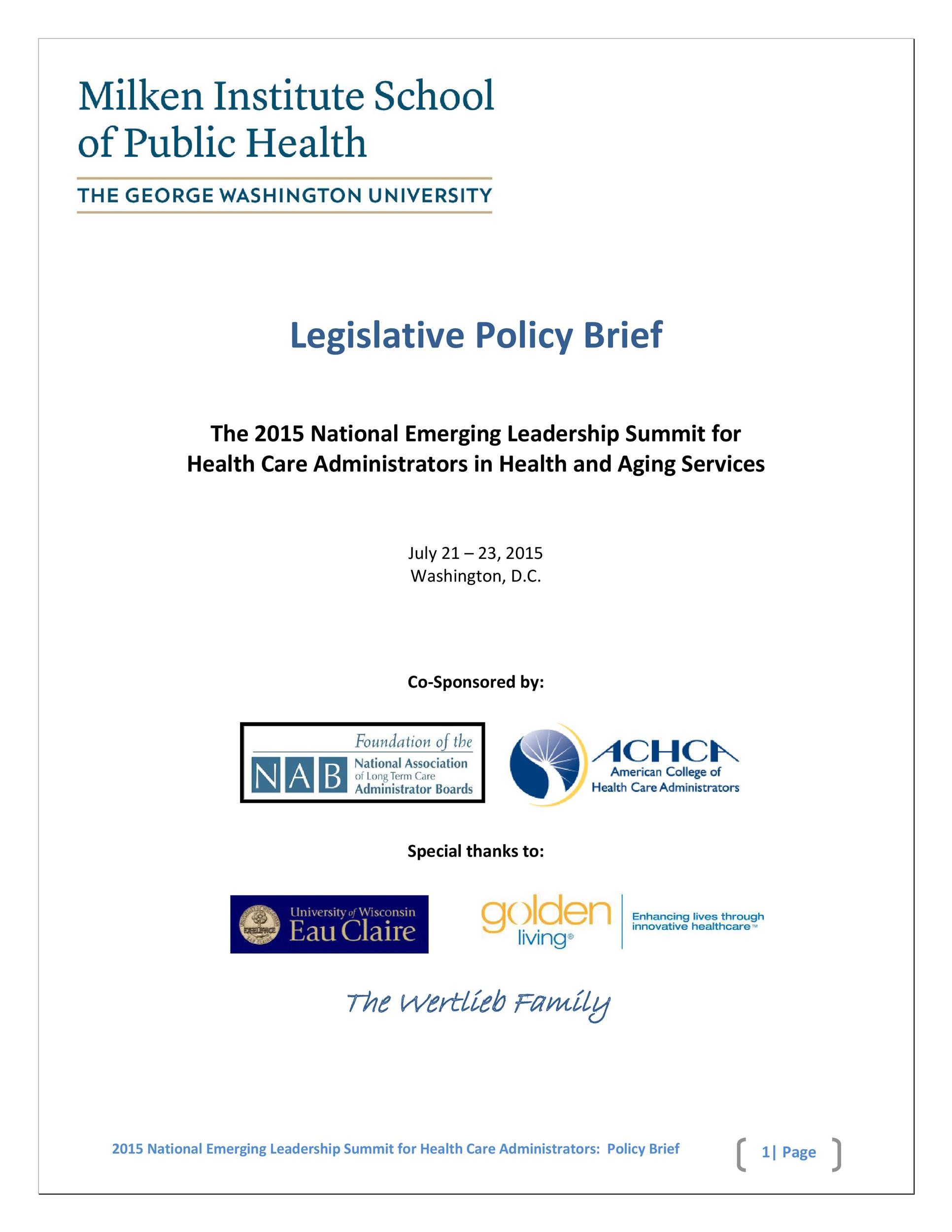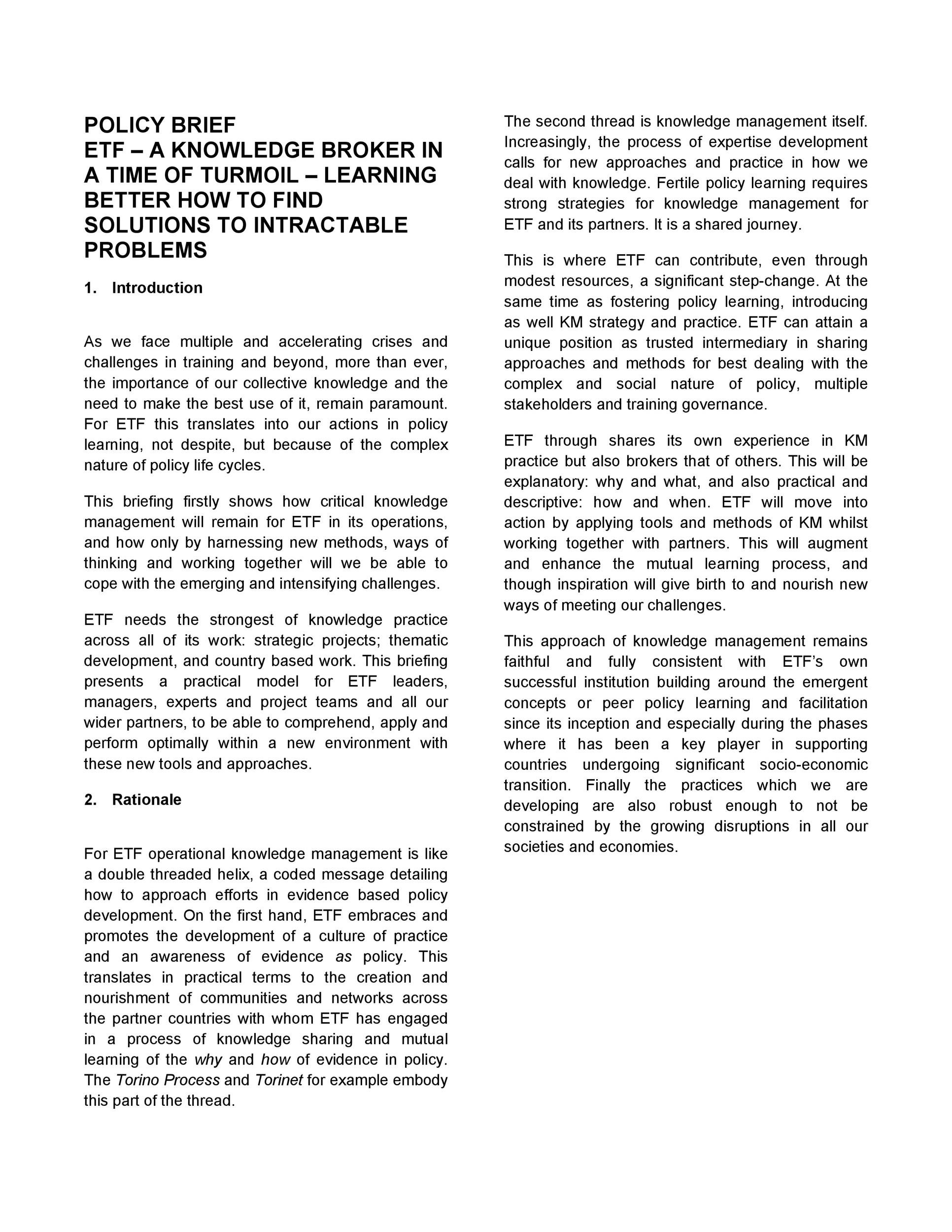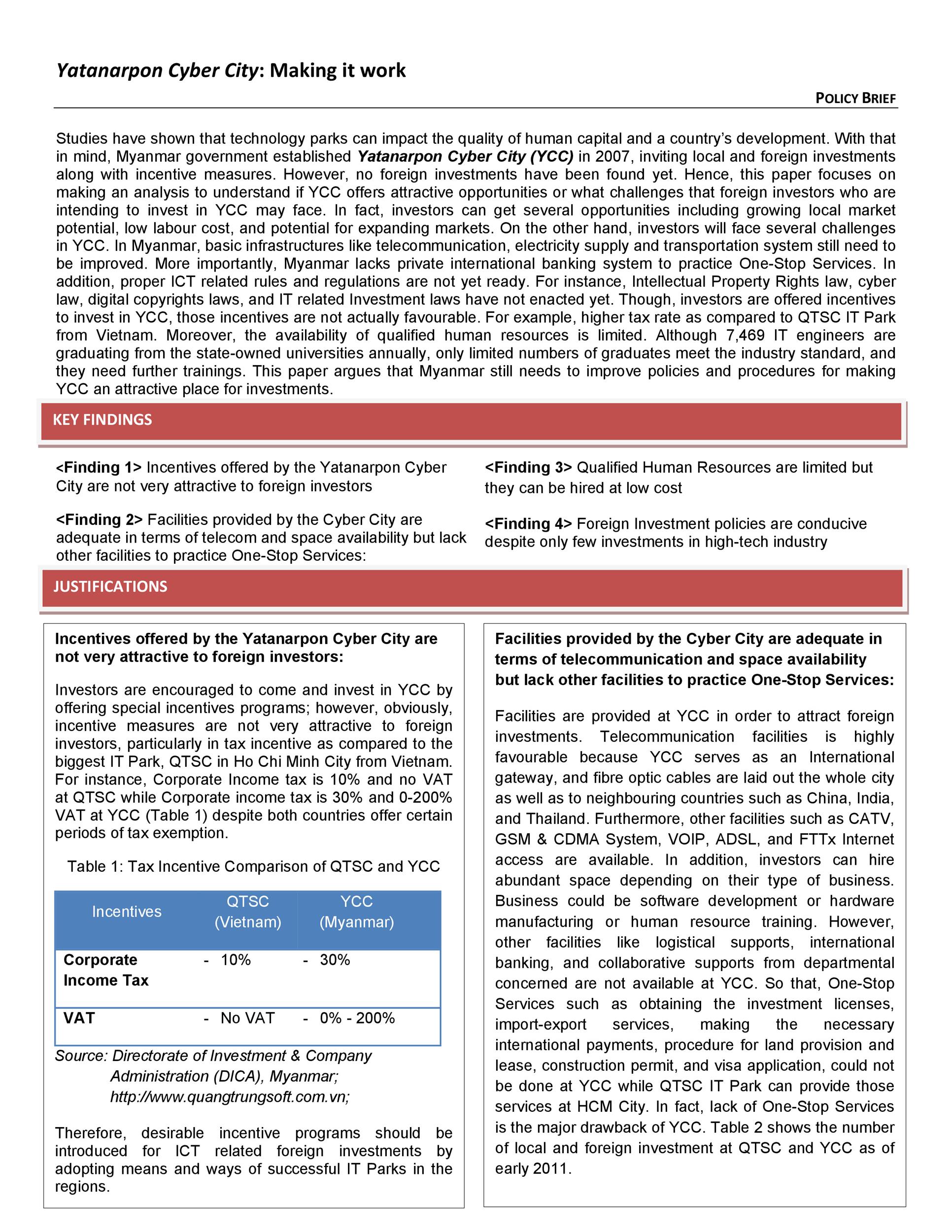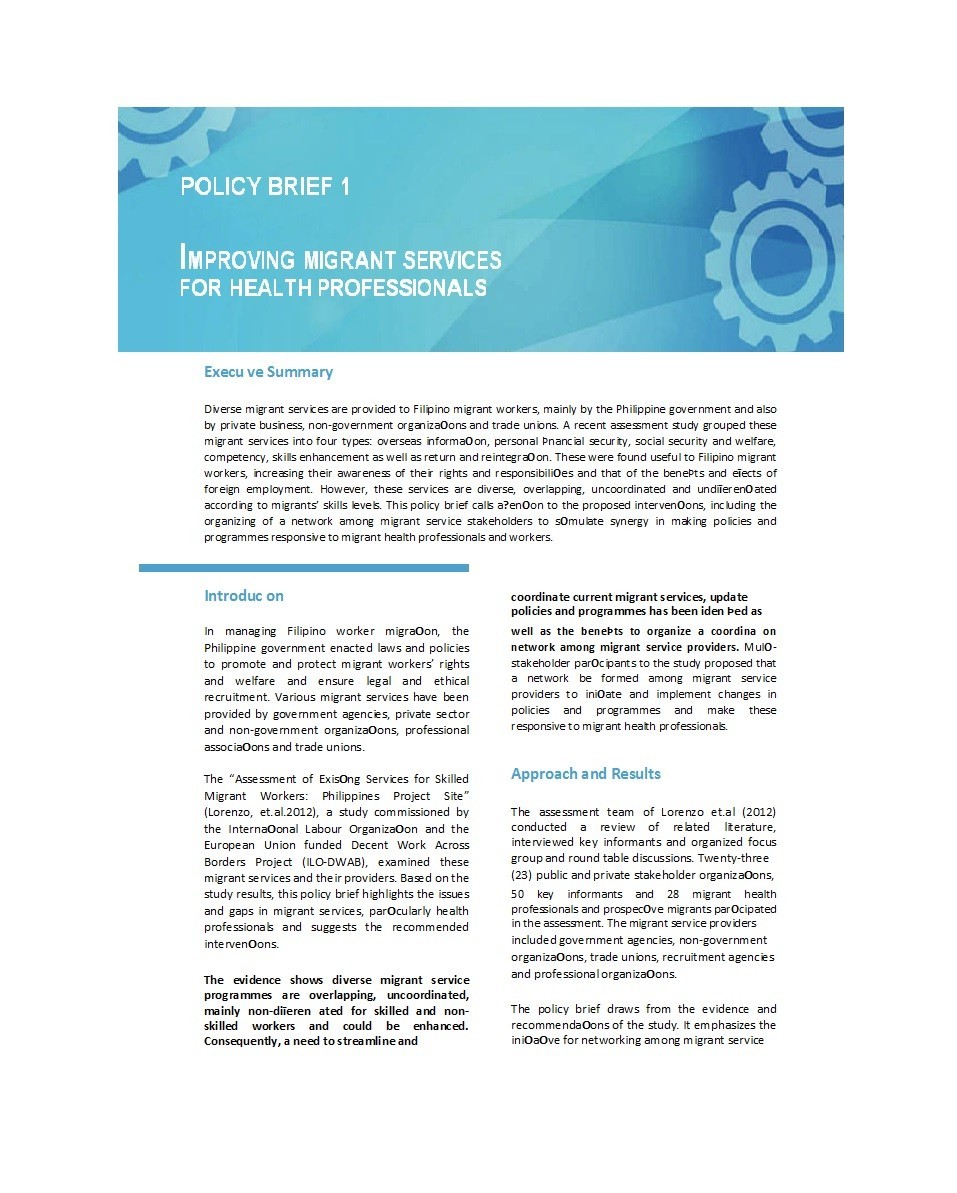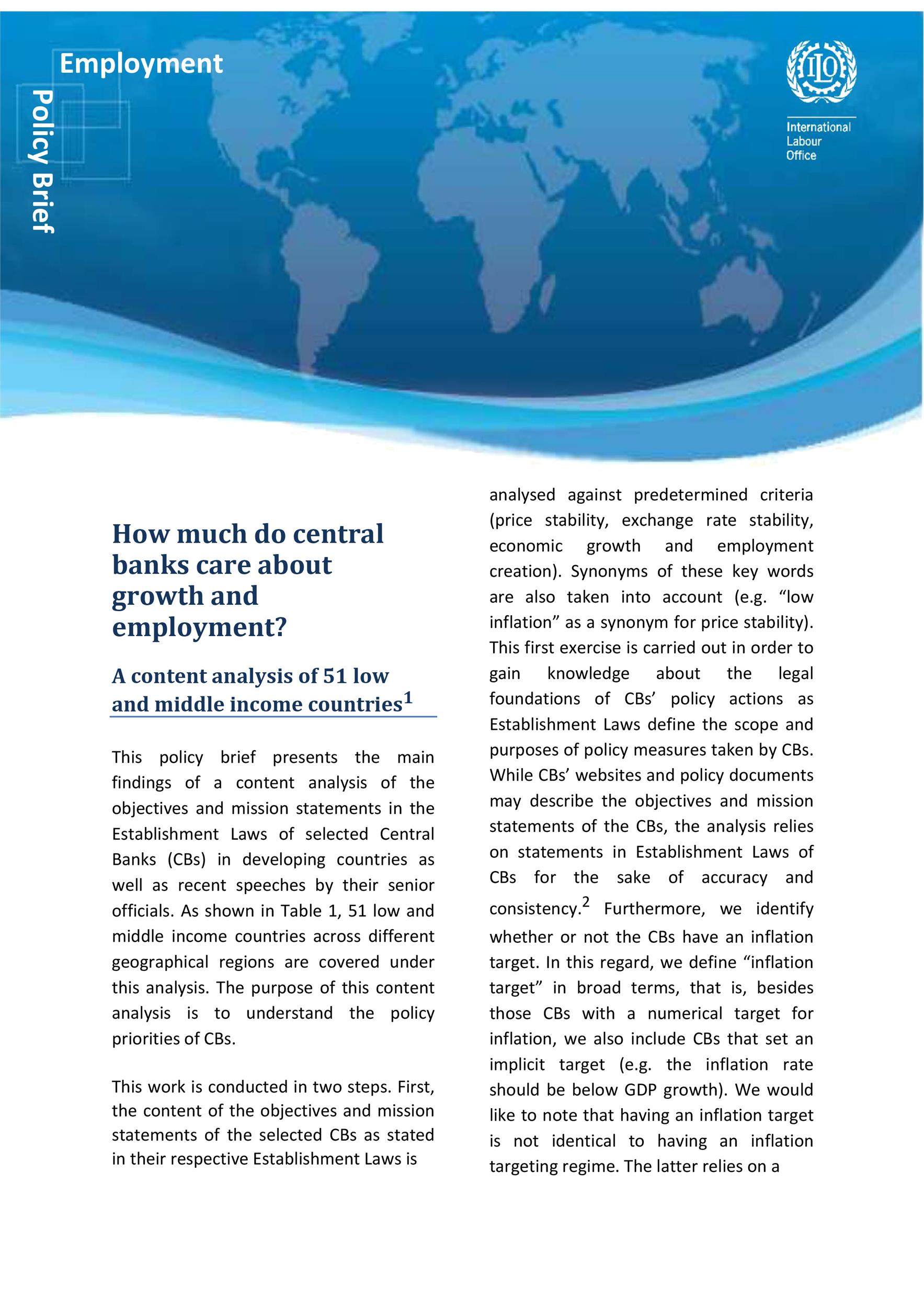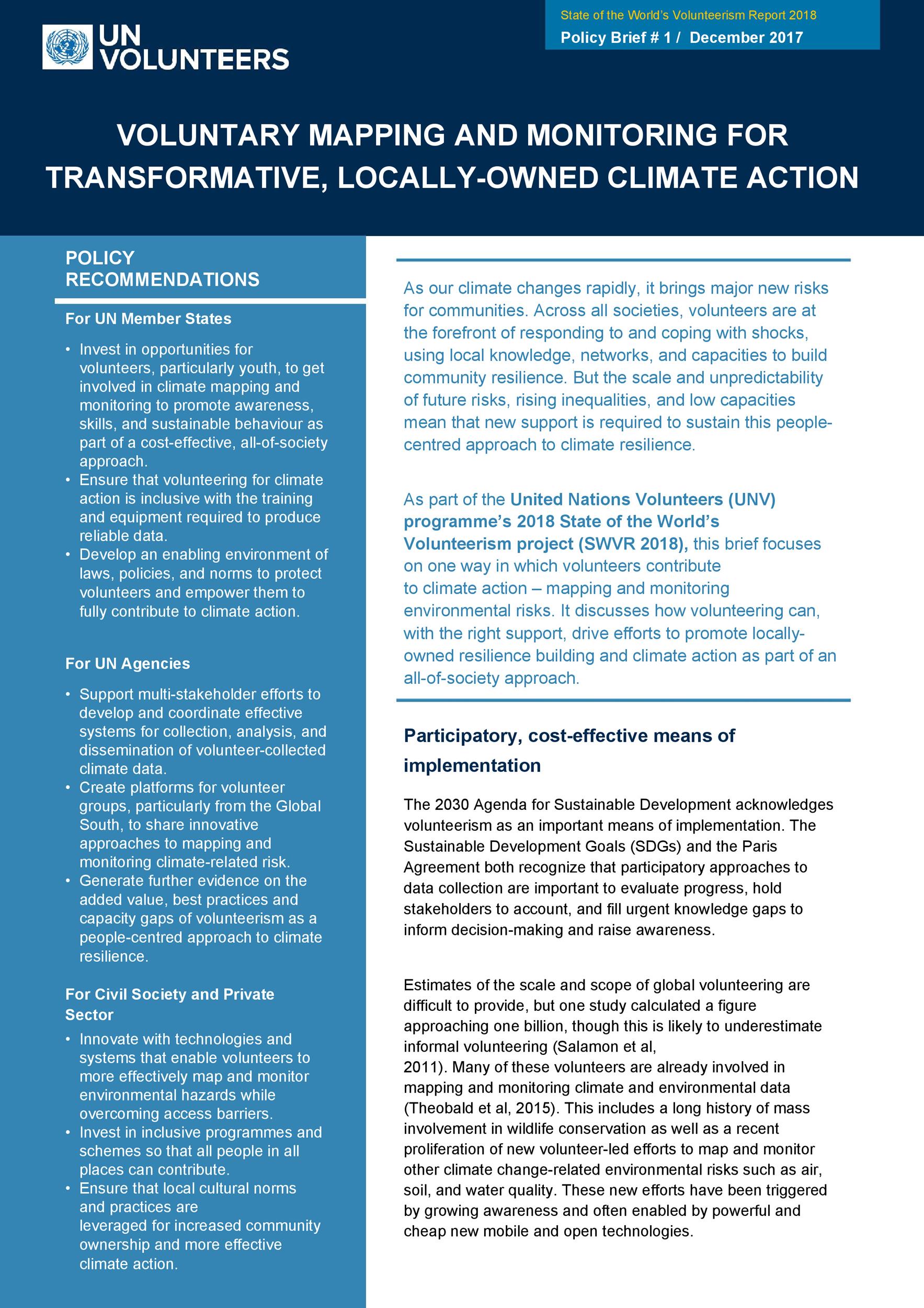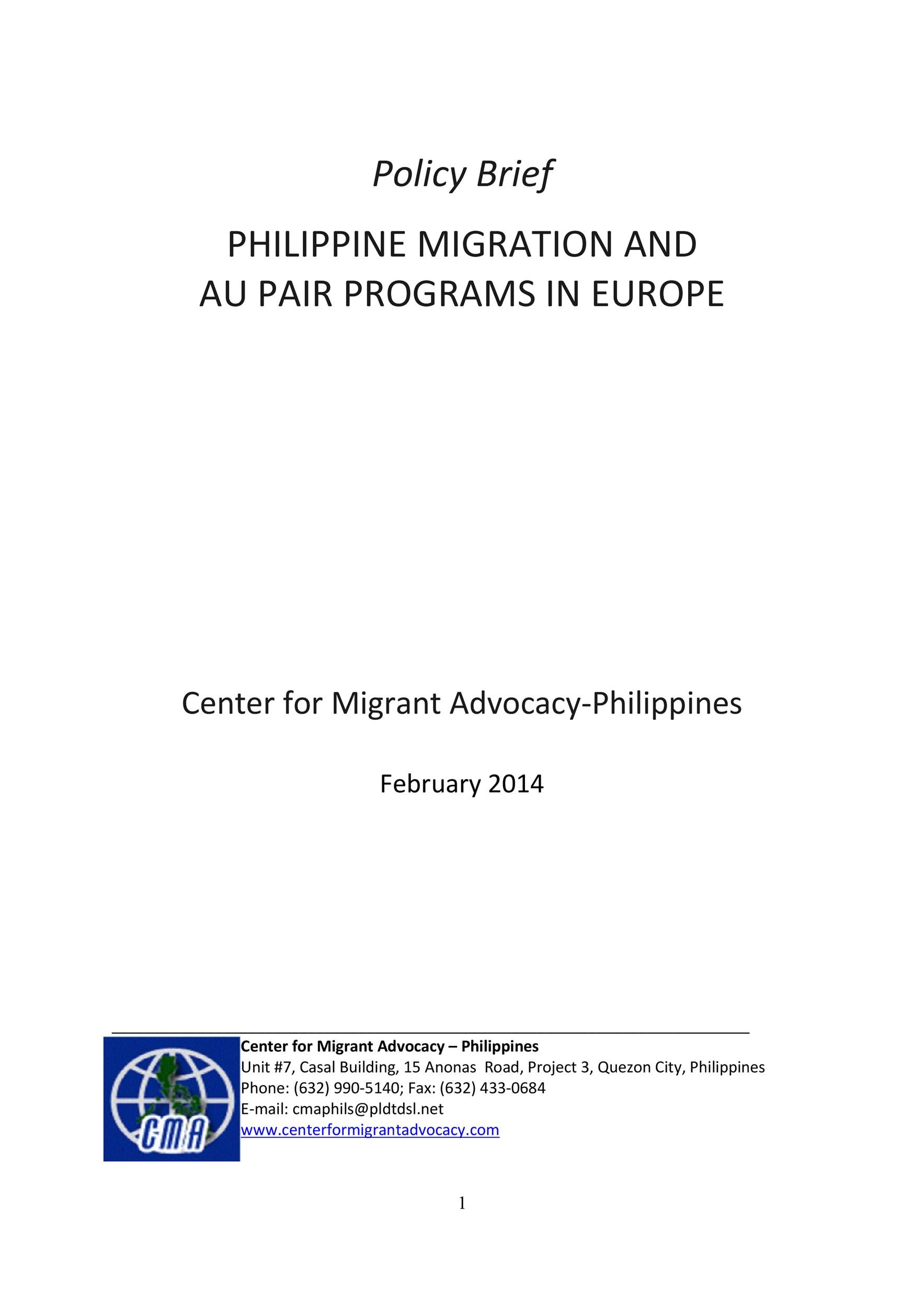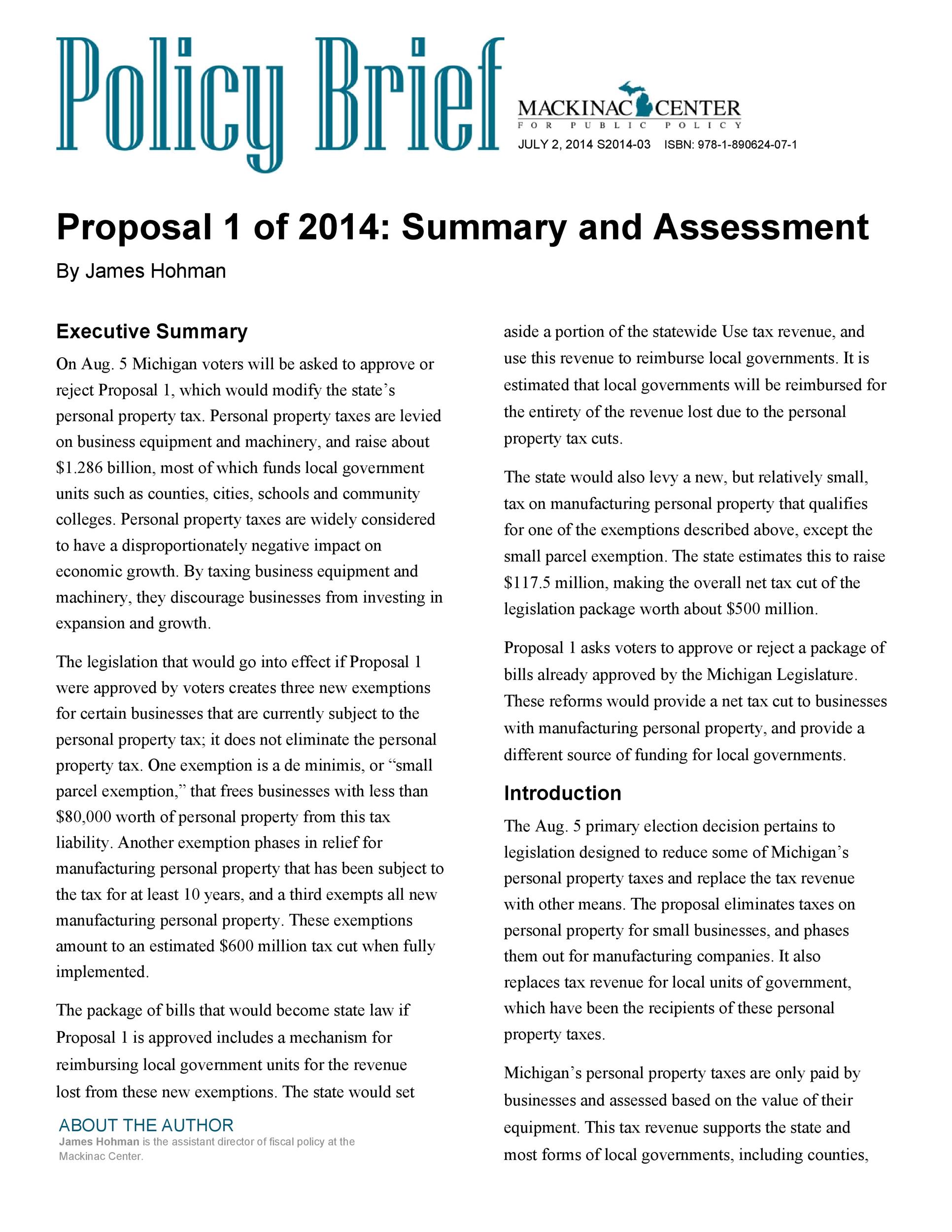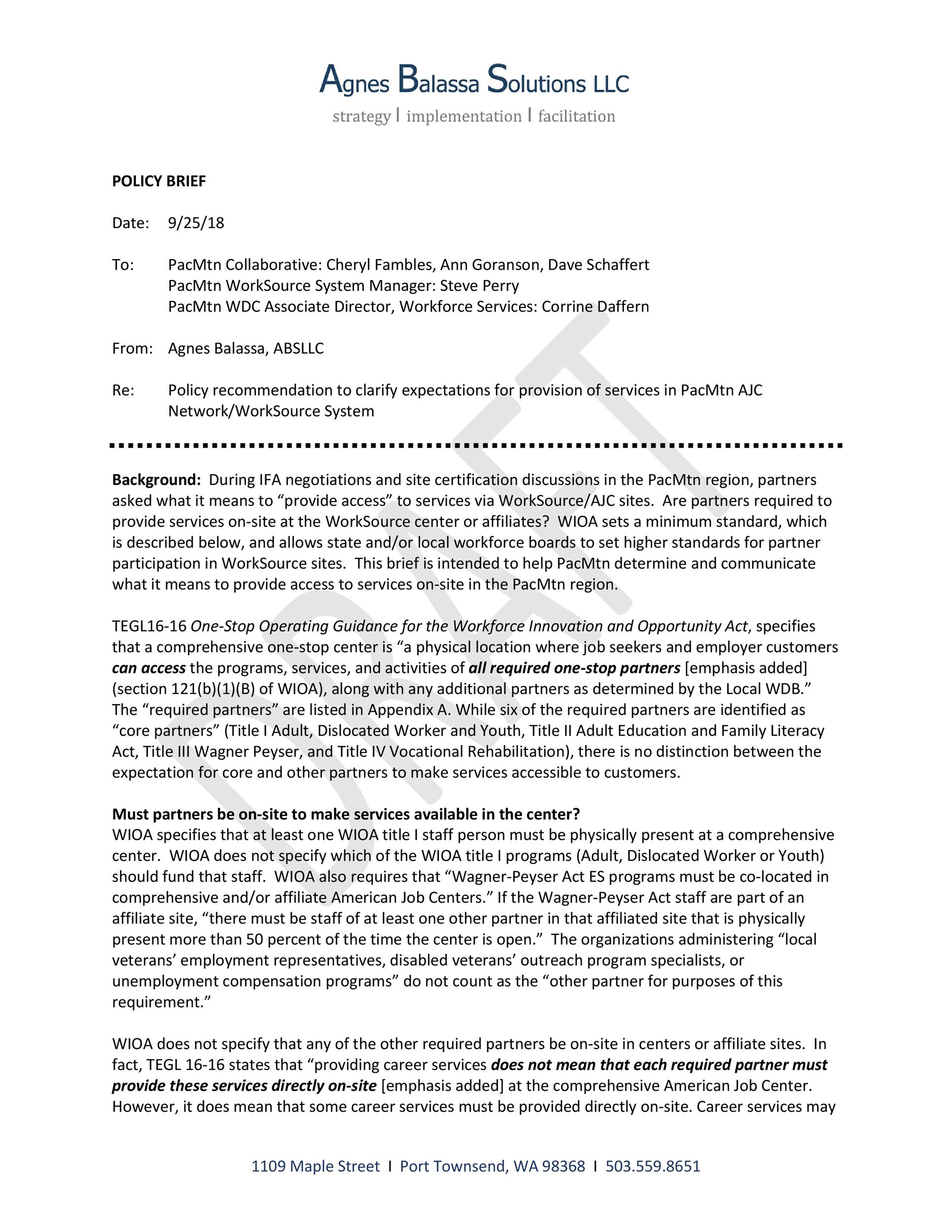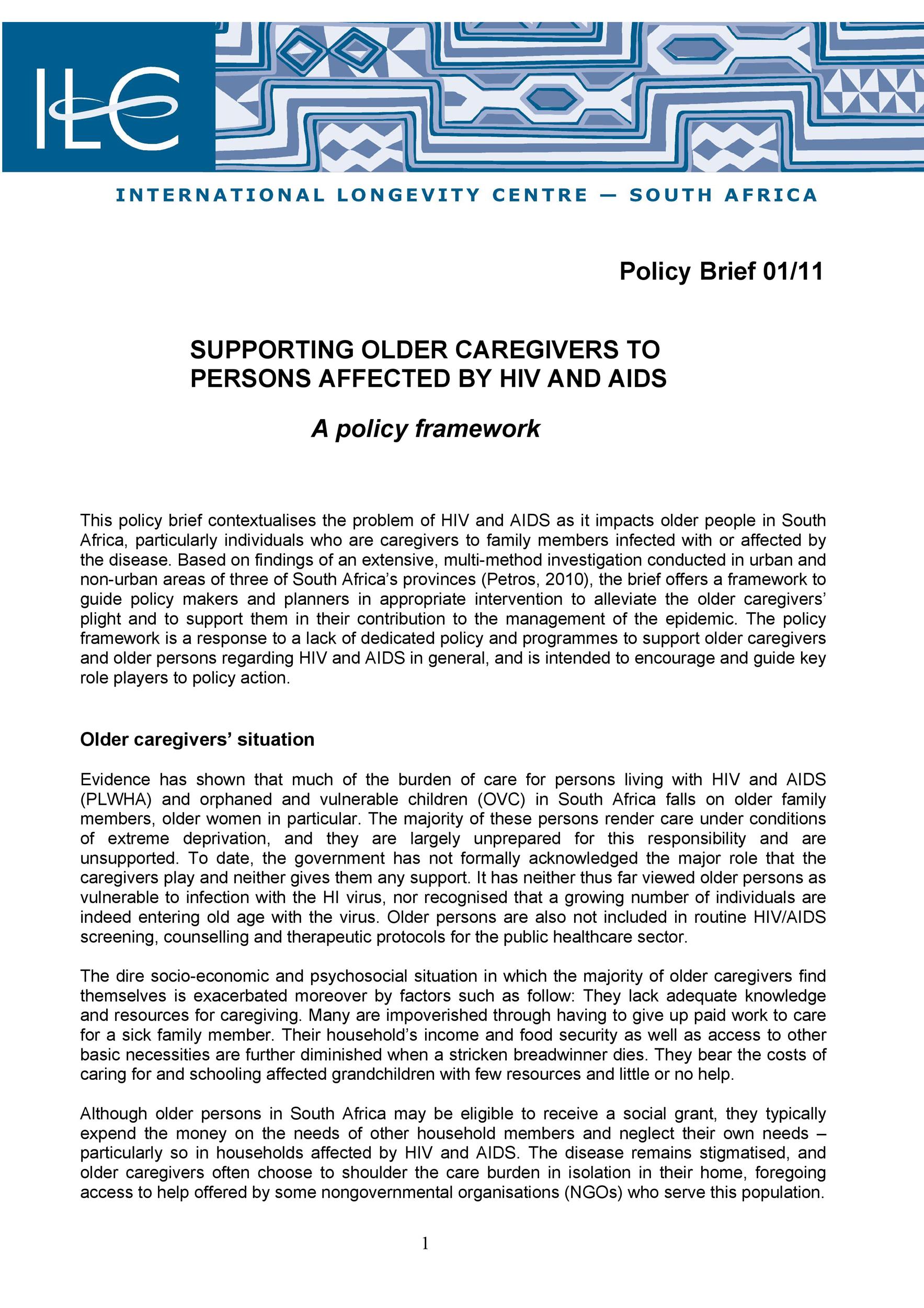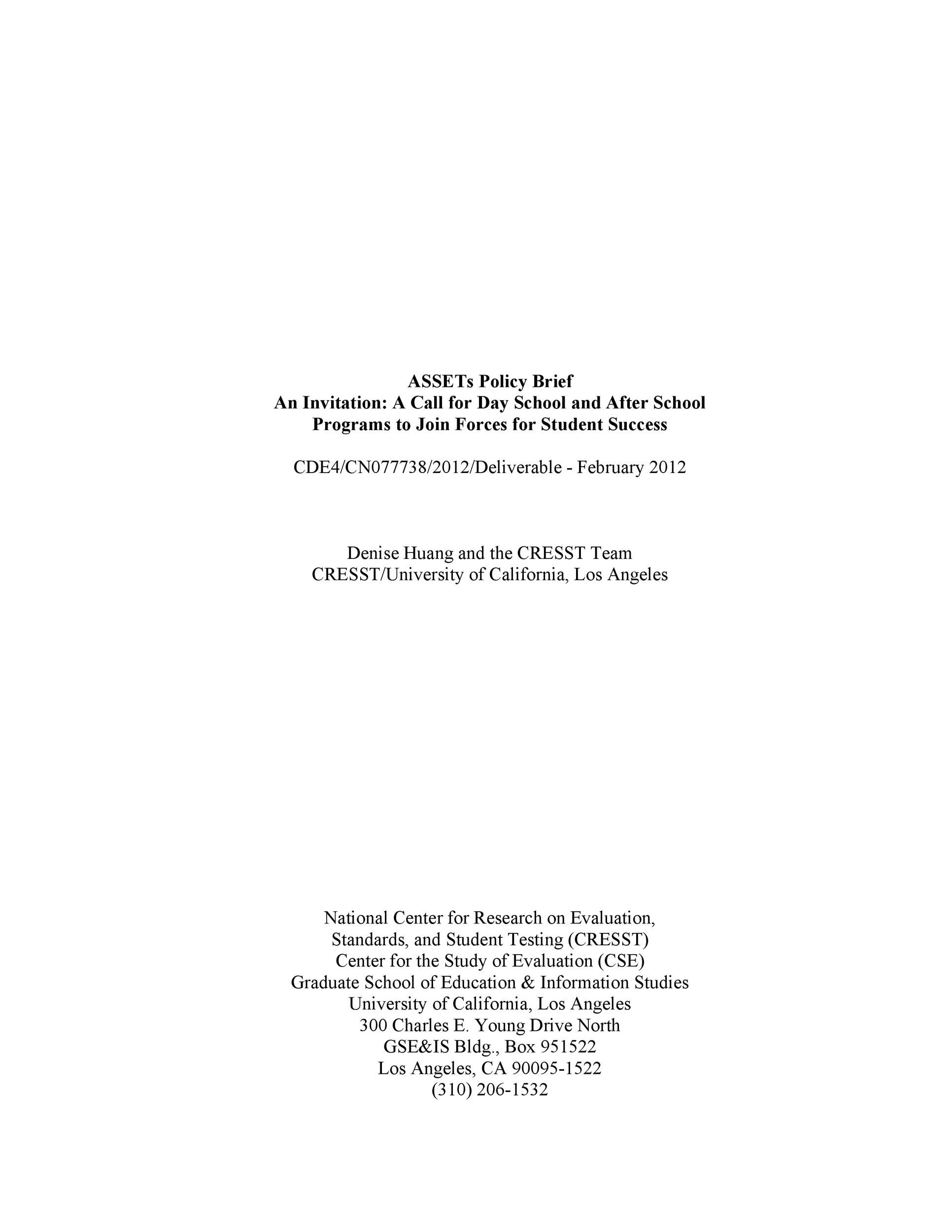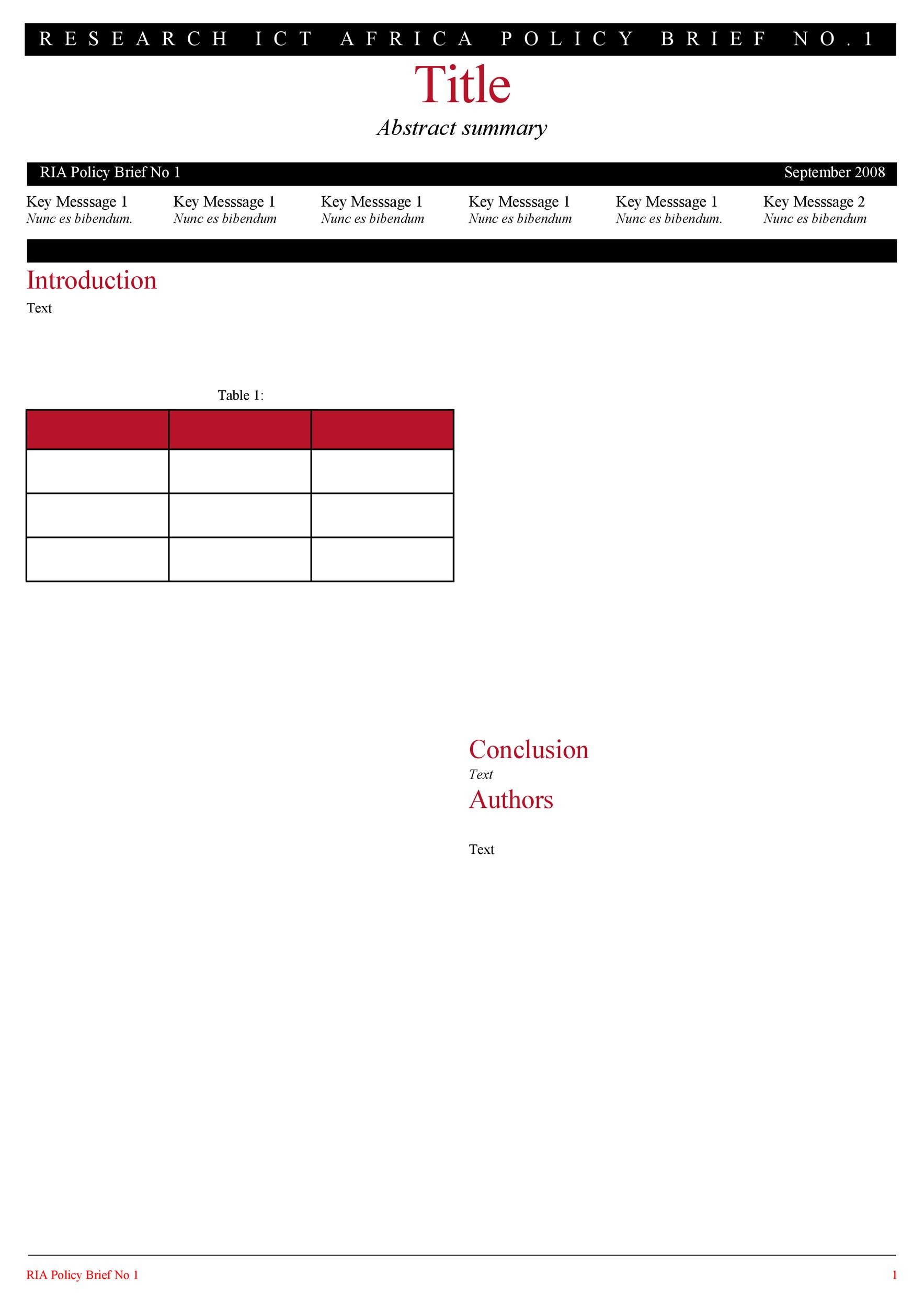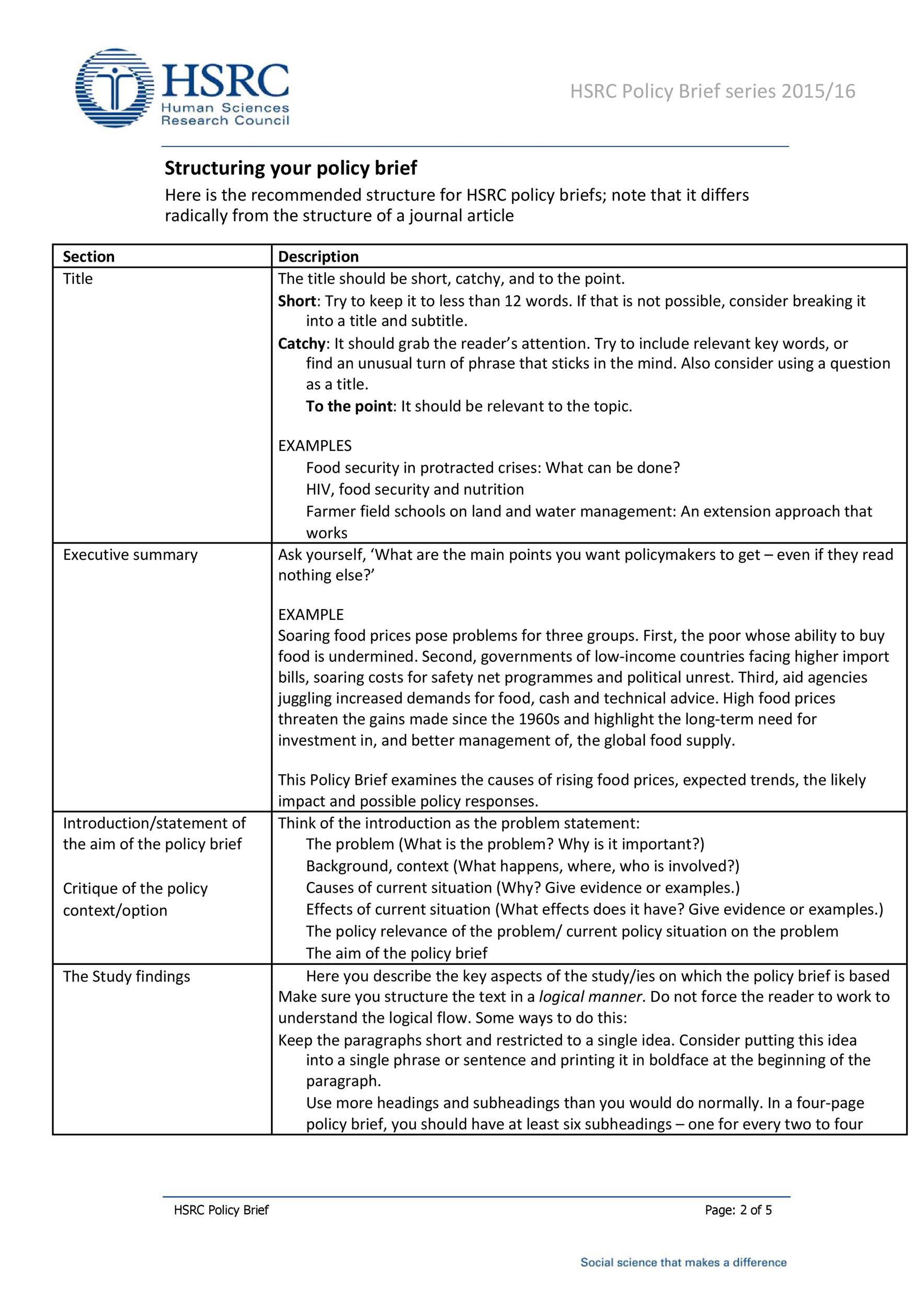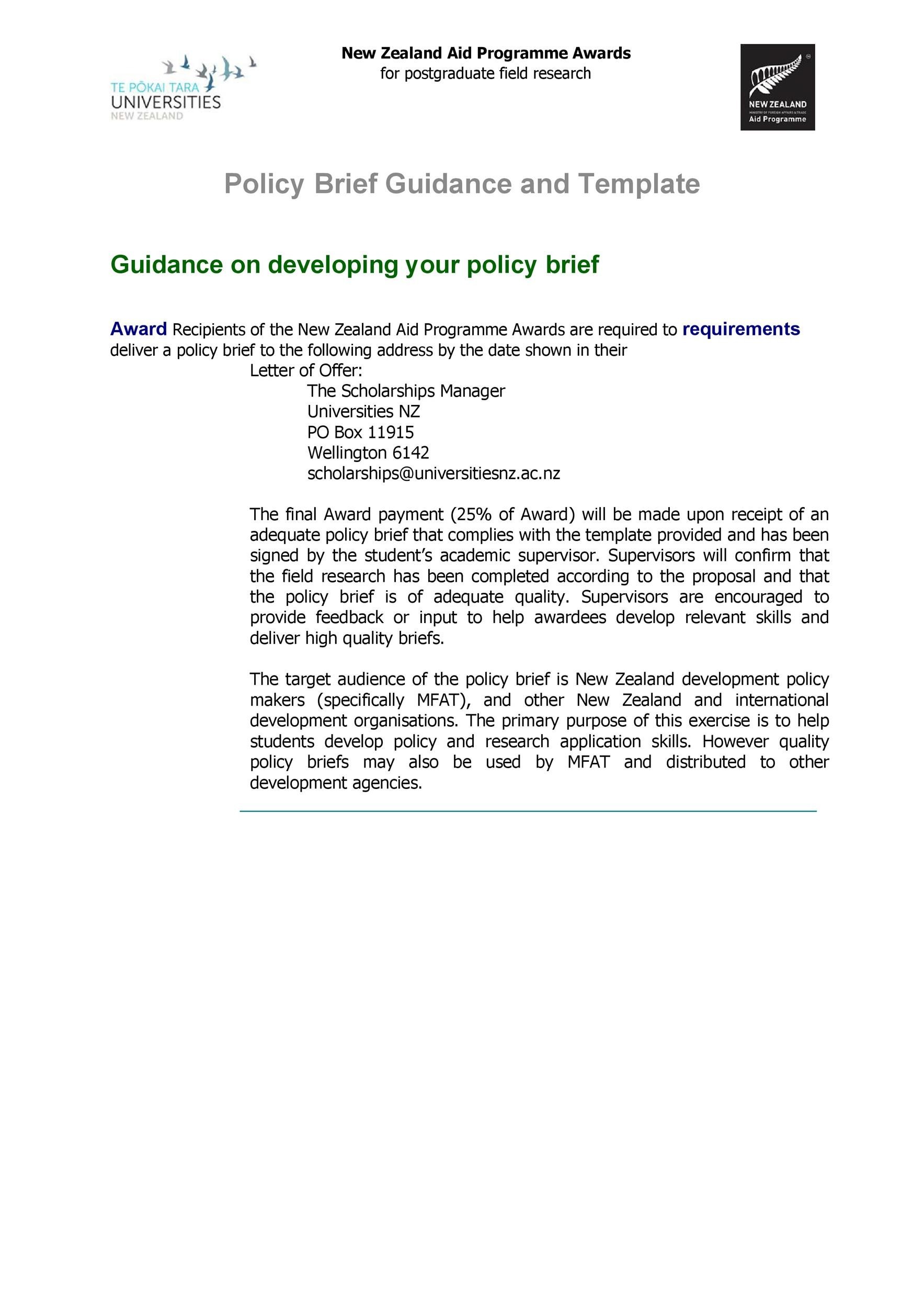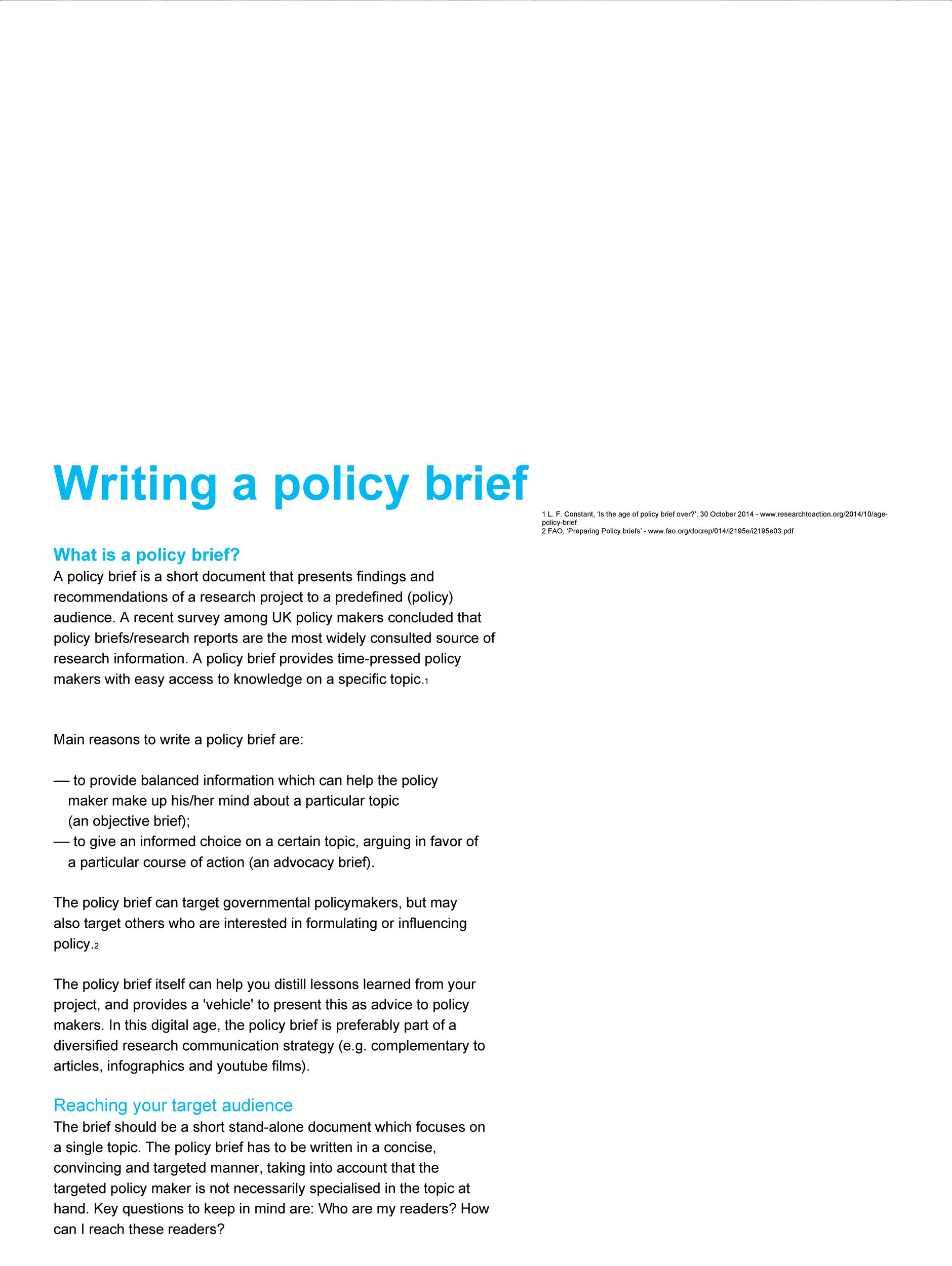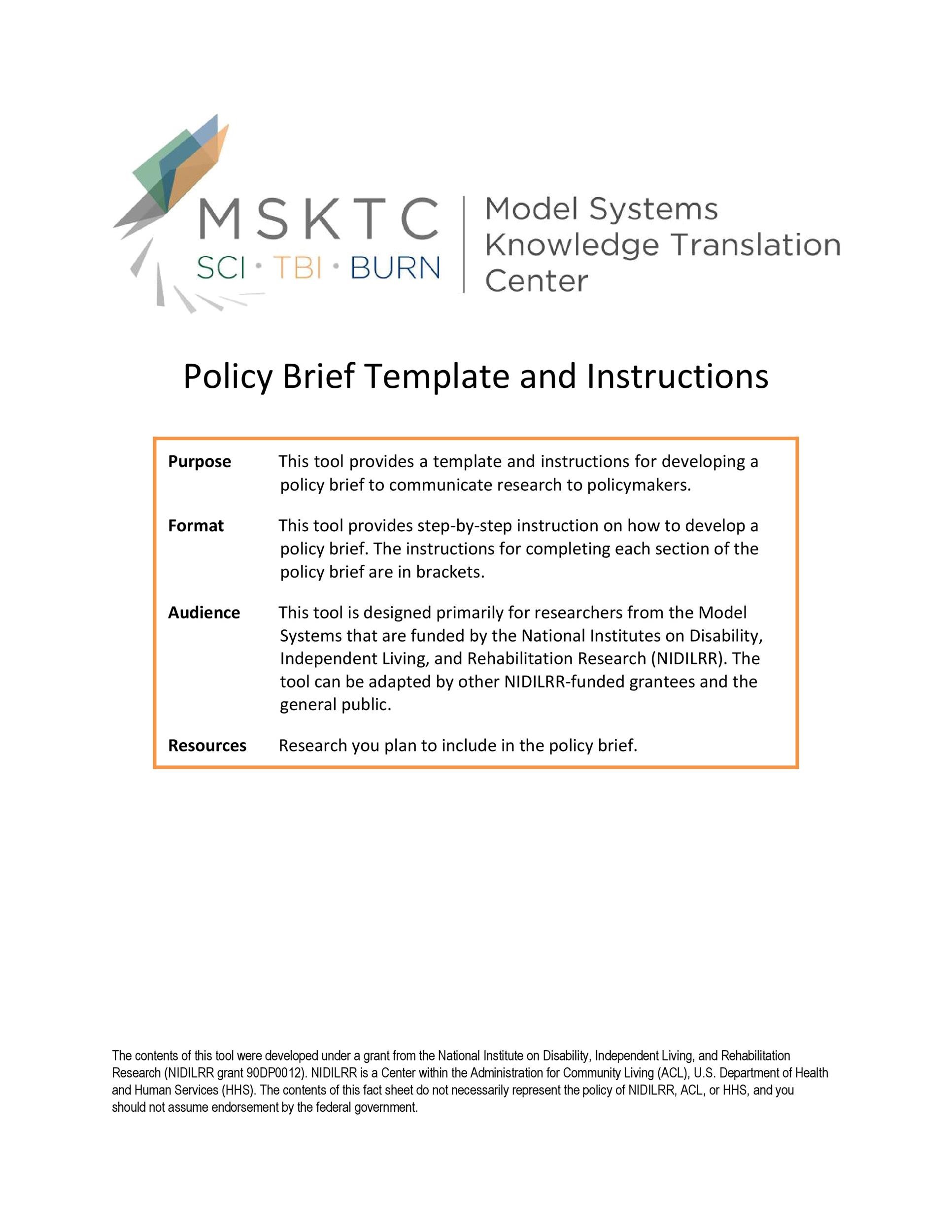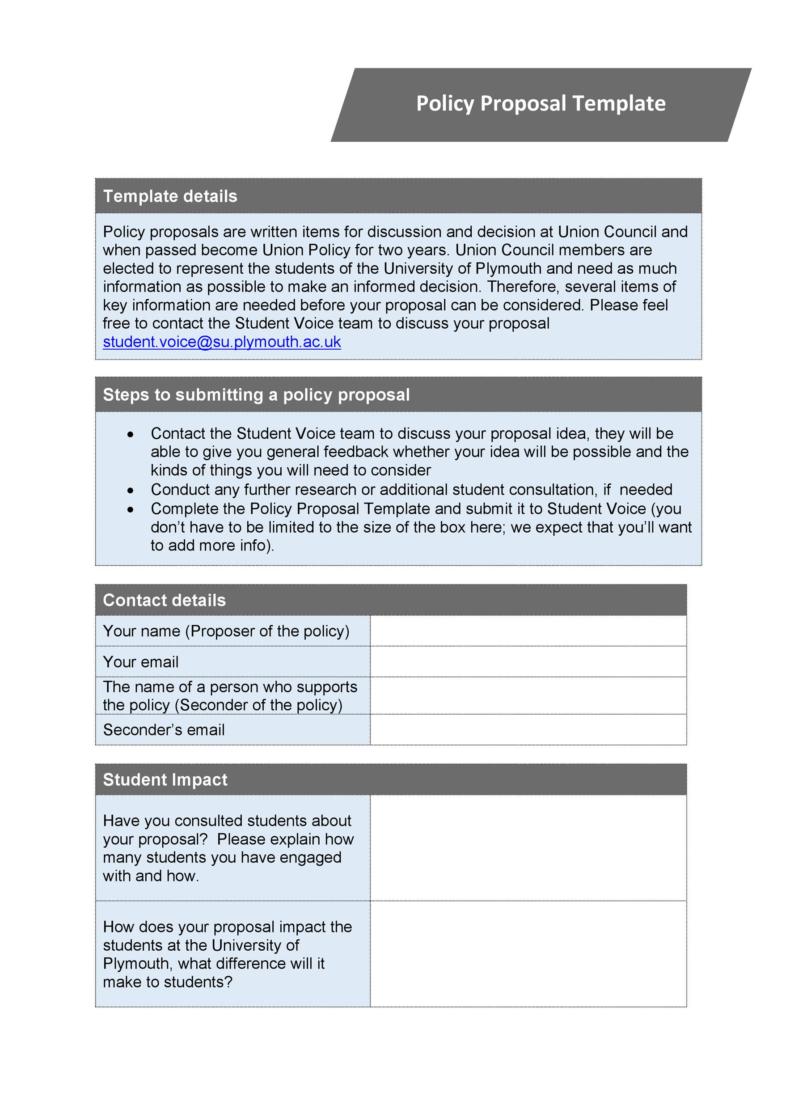A policy brief template comes in various forms. You can use it for internal business relationships, organizational practices, and government processes. The content of a policy brief example depends on its usage and purpose. Generally, though, all policy briefs must provide propositions of solutions to help address issues.
Table of Contents
Policy Brief Templates
What is a policy brief?
Imagine that you’re a public official who serves on a committee which establishes the standards for vehicles in order for them to pass state inspections. This is a very complex issue which means that creating a policy brief template for it requires a lot of thought.
Before creating a policy brief sample, you must know and understand the policies which already exist regarding how emissions affect the health of the public and the environment, the different approaches you can use and their consequences on the economy, and more. All this information helps you create an effective document much like the policy brief examples available online.
With all the existing information and policies, who has the time to read everything? This is where a policy brief comes in. This document contains a concise summary of all information to help the readers understand and make better decisions about existing policies.
They provide an objective summary of relevant information, suggest possible options or even contain arguments about different courses of action.
Policy Brief Examples
What makes a policy brief template unique?
You may find different kinds of policy brief examples in varying academic disciplines. Since there is no standard policy brief template, the information on the document varies too. Also, policy briefs differ from other written assignments in terms of:
- Audience
Different kinds of documents or writing assignments address different types of audiences. For a policy brief template, you create it for a general audience. You may also address the document to a policymaker who is also concerned with the issue of your policy brief. - Terminology used
Most academic disciplines discourage the use of unnecessary terminology. When it comes to policy briefs, clear language is especially important. Try to avoid using jargon. Instead, use direct language to make your document easy to understand by anyone who reads it. - Purpose
The main purpose of a policy brief is to communicate the practical repercussions of research to its audience. This means that you make use of the information you’ve researched for a specific purpose. The policy brief helps the readers decide on what course of action to take.
It relates the current research to the existing policies. It also emphasizes the application of research outcomes instead of evaluating research procedures. Although research papers and other academic documents may also come with suggestions for practical actions, policy briefs emphasize these points more strongly since you would develop these points more fully.
Policy Brief Samples
What to consider when writing a policy brief?
Whether you want to create something as simple as an email policy or something more complex like government policies, make sure to use the purpose of the policy to guide you from writing the policy brief template to its implementation. A policy brief is an important communication tool.
Use it to help your business and its management to reach your target audience of specific policy options accordingly. Therefore, creating the document in the most effective and efficient way possible is essential. Before creating your policy brief example, consider the following:
- Research and understand as much as you can about the problem or issue which created the need for the policy choices. You need to be fully knowledgeable in terms of all the relevant information associated with the problem. Do this so that you can answer any questions and inquiries after you’ve disseminated the document.
- Also, research and know about the target audience of your document. Make sure that the ones who will read the policy feel the fairness and objectivity after they’ve read it.
- Make a list of the names of all stakeholders responsible for planning, developing, and implementing the policy brief. In doing this, it’s easier to regulate policy in a manner that’s more organized. This also helps you assign work functions and call to actions for those who know the ways on how they can provide their own contributions to make your policy brief sample better.
- Find out the recommended policy action to give you a better idea of what you may want to include in your own document. Anyone who reads the policy brief must know your reasons for creating it in the first place. You should clarify why you expect them to follow the content of the document you’ve made.
Free Policy Brief Templates
How do you write a policy brief outline?
Although there are different purposes for creating this document, a policy brief template has a distinctive format which supports the changes in tone, purpose, and audience. Before creating the document, familiarize yourself with the specific requirements that you must follow, especially if you’re creating it as an assignment at school or at work.
Different as they are, policy briefs also have a number of common features. For one, you need to use a lot of headings and you must always keep the sections relatively short. This type of structure varies from other types of academic documents, especially those which contain long sections of texts.
Also, a policy brief may contain charts, graphs, and other visual aids to help make the document more readable. If you’re tasked to make your own policy brief template, make sure it contains the following:
- Title
An effective title communicates what’s written in the document quickly but in a way that makes it easy for the readers to understand. - Executive summary
This section typically contains one or two paragraphs. Here, you include an overview of the issue and the policy action you’re proposing. - Scope or context of the problem
In this section, you communicate the significance of the issue. The aim here is to convince your reader why the policy action is important. - Policy alternatives
In this section, you talk about the existing policy approach. Then you explain your proposed options. Make sure to write this section as accurately and fairly as you can. It also aims to convince the reader about the desirability of the policy action you’re proposing in the document. - Policy recommendations
Here, you include a very detailed explanation of the concrete steps you plan to take to deal with the policy issue. - Appendices
In some cases, the readers may require further support so that they will accept your points or arguments. However, including this information within the document itself might confuse other readers. So you can include any additional information in the appendices. - Recommended or consulted sources
These are reliable sources which you’ve used throughout your document. Include this information to guide the recommendations and discussions about your policy.
Tips for writing your policy brief
If you want your policy brief to be as effective as possible, make sure it contains all the necessary and relevant information to allow the readers to properly understand the specific policy. A comprehensive and well-made brief lessens the inquiries of the readers which might otherwise have an effect on the betterment of the policy’s execution.
Here are some tips for writing your policy brief template:
- Come up with a title for your policy brief that’s memorable to catch the attention of the readers
When the readers can remember the title of your policy brief while they’re reading it, they become more familiar and aware of the contents of your document. Think of a simple, direct-to-the-point title which is significant and easy to remember. - Create the summary statement of your policy brief
The more precise you can present this statement, the better. Then it’s easier for the readers to understand the statement and what the document is all about. The summary statement also helps ensure that there will be a wrap-up of the policy at hand later on. - Include the statements and scope of the previous policy
Include the details about what you plan to change. If you want to create an effective policy brief, include a clause where you specify the critique of policy options. This is especially important if you want to add or remove clauses in an existing policy followed by the organization or business.
You can also incorporate the clause in your document while in the drafting stage and there is a number of items you still have to consider and decide upon before making finalizations in the policy. - Talk about the significance of providing a solution for the problem
Include the context of why you’re trying to convince your readers to take actions in your document too. Your audience can take action through the program you’ve specified within your policy. - Include notes, recommendations, and improvement specifications at the end of your policy brief
As aforementioned, these are very useful for the sake of further discussions and inquiries. This information also makes your document a good reference for the future. - Make a list of all your sources
Including this information makes your document more objective, trustworthy, and credible.

